-
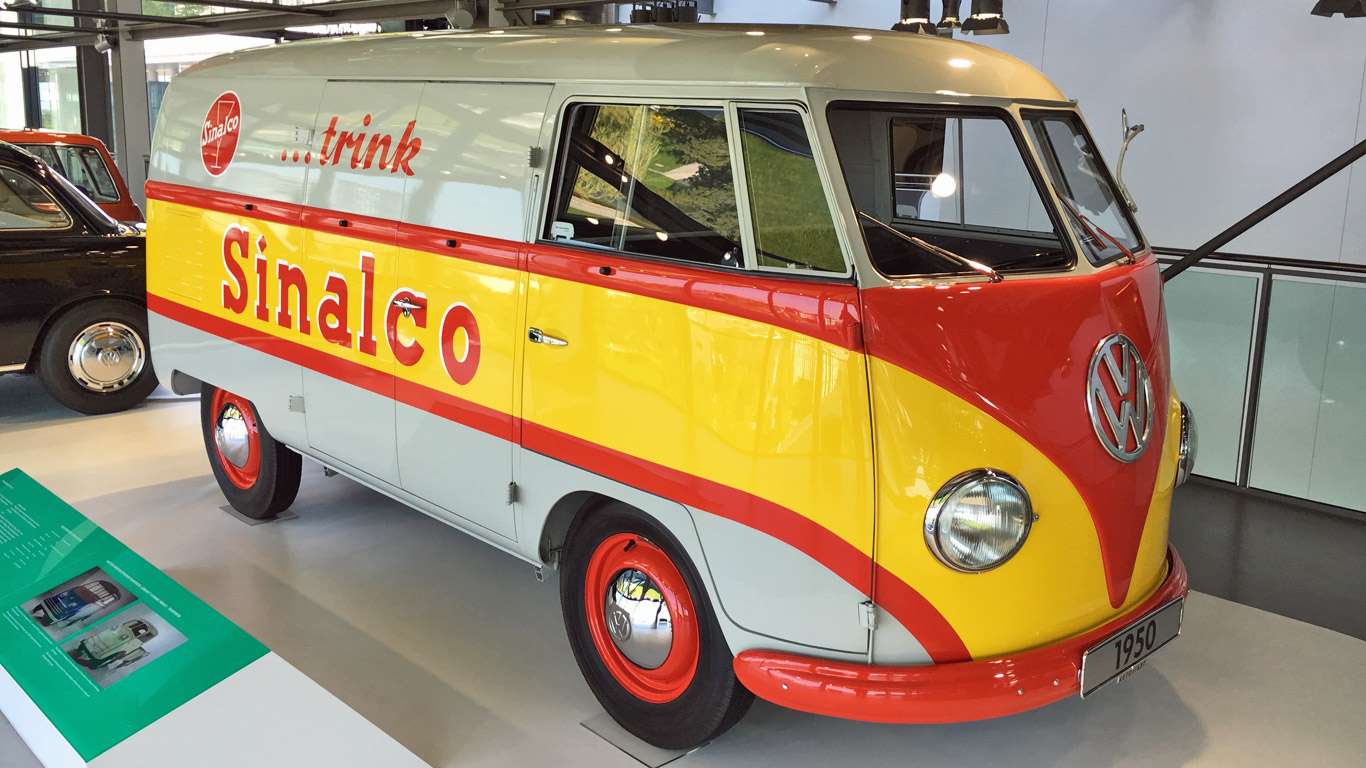
ZeitHaus
© Motoring ResearchAutostadt (‘car city’ in English) is VW’s mammoth visitor attraction, located near its headquarters in Wolfsburg, Germany. Built at a cost of nearly £350 million, each Volkswagen Group brand has its own architect-designed home in the grounds, with its latest models on display.
Pre-pandemic, Autostadt regularly pulled in around two million visitors a year. Without doubt our favourite area to explore is the ZeitHaus, a museum featuring five floors of automotive heritage – including plenty of classic cars that aren’t Volkswagens.
Stay with us for a virtual tour.
-
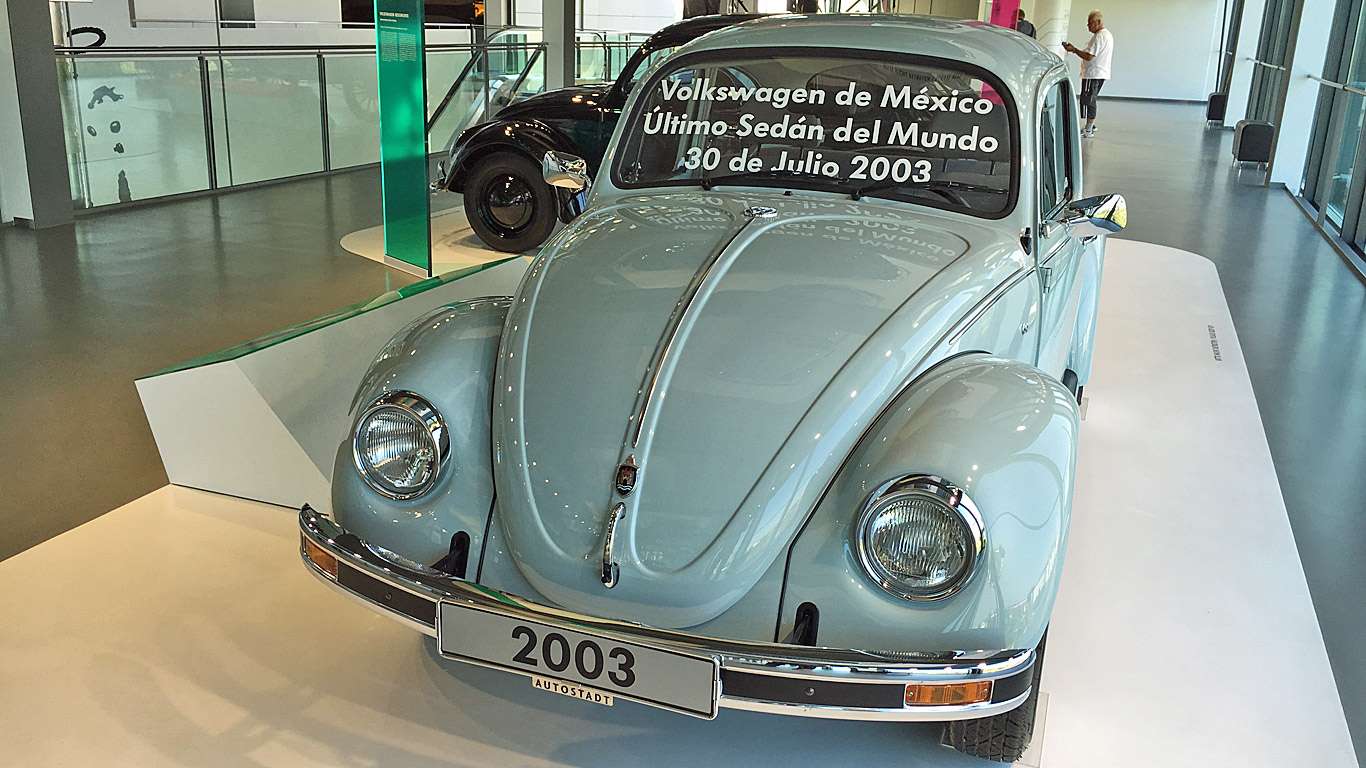
2003 Volkswagen Beetle
© Motoring ResearchObviously, the museum has a Beetle. It is quite an important car in motoring history, after all. Look closely, though, and you’ll see ‘2003’ emblazoned on the windscreen and number plate. That’s because the Beetle was sold (and remained hugely popular) in Mexico until 2003, where it was dubbed the ‘Vocho’.
-
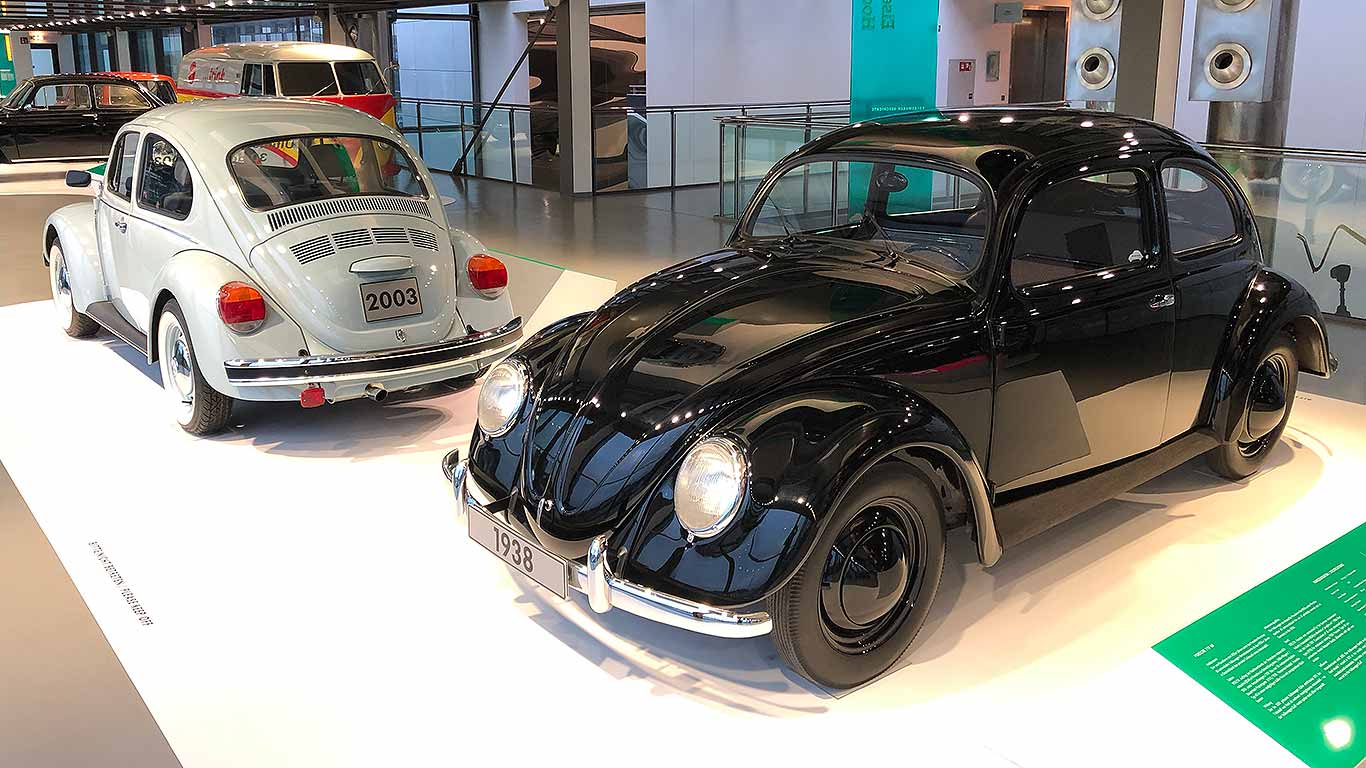
1938 Volkswagen Beetle
© Motoring ResearchHere’s an original Beetle from 1938 – meaning 65 years separate the two cars pictured here. Designed under the watch of Ferdinand Porsche, the Beetle was the vision of Adolf Hitler. The dictator wanted a cheap, simple car that could be mass-produced for Germany’s new road network.
-
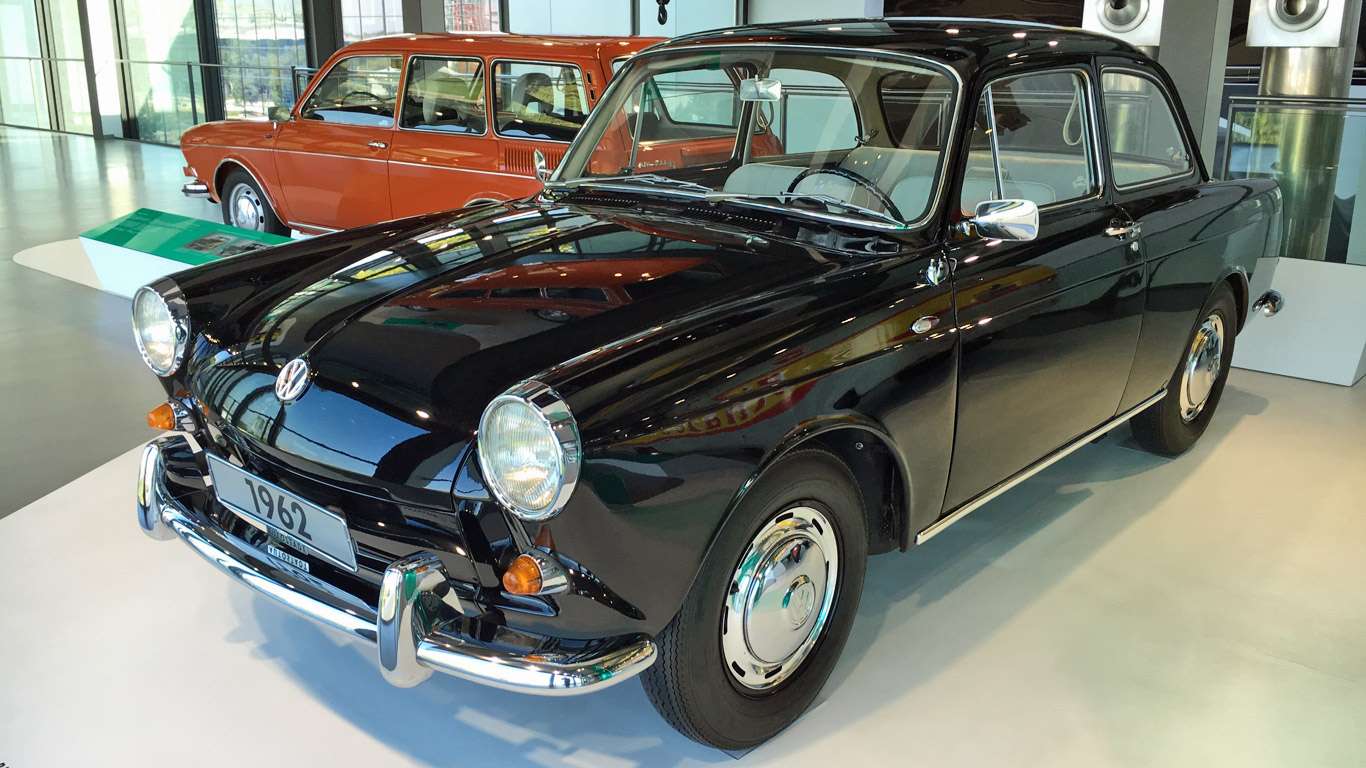
1962 Volkswagen Type 3
© Motoring ResearchIntroduced at the 1961 Frankfurt Motor Show, the Volkswagen Type 3 was a mid-size car designed to appeal to ‘successful people’ who valued the robustness of a Volkswagen. Marketed as the Volkswagen 1500 and later 1600, it was sold in three body styles: saloon, fastback and estate (the latter called ‘Variant’ in most markets).
-
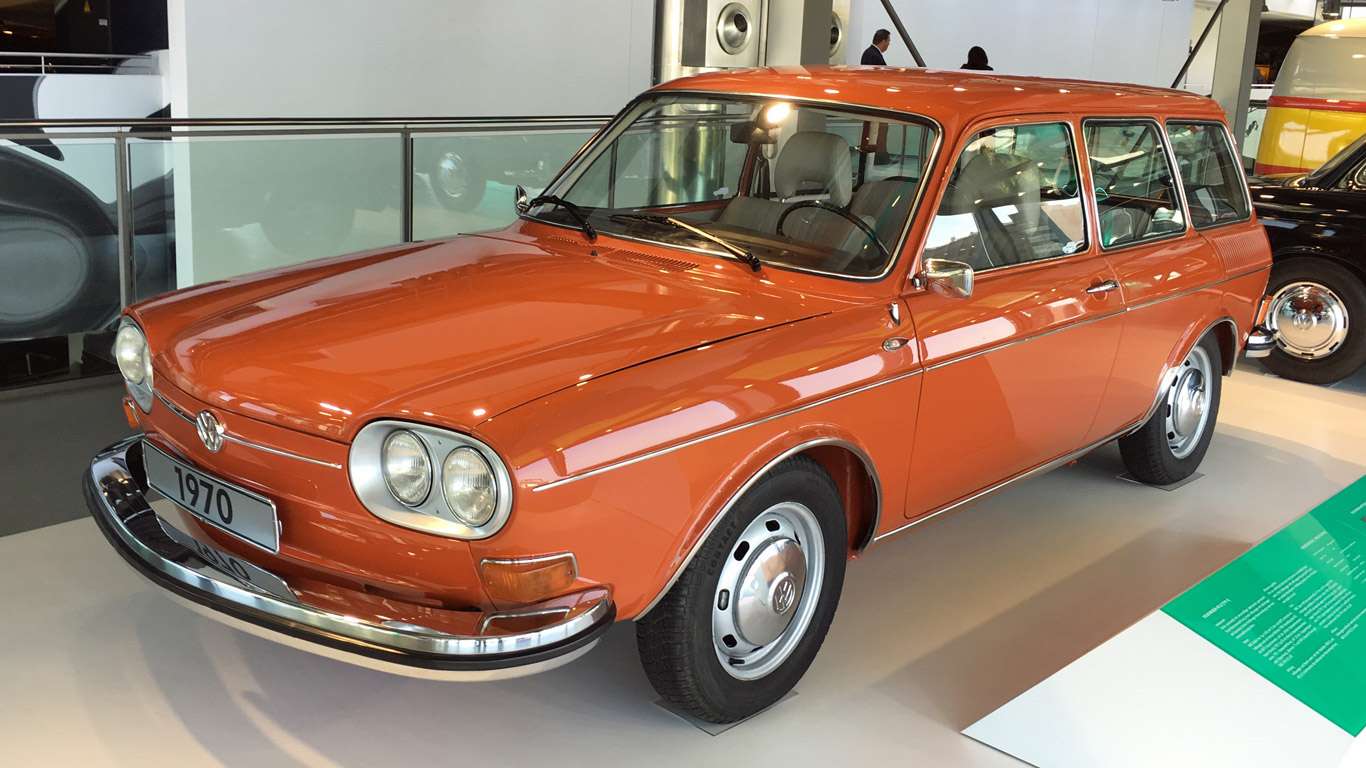
1970 Volkswagen Type 4
© Motoring ResearchLaunched in 1968, the Volkswagen Type 4 boasted Italian styling by Pininfarina. It was available as a two- or four-door saloon, as well as the two-door estate seen here. As usual for Volkswagens of this era, it was powered by an air-cooled boxer engine located in the rear of the car.
-
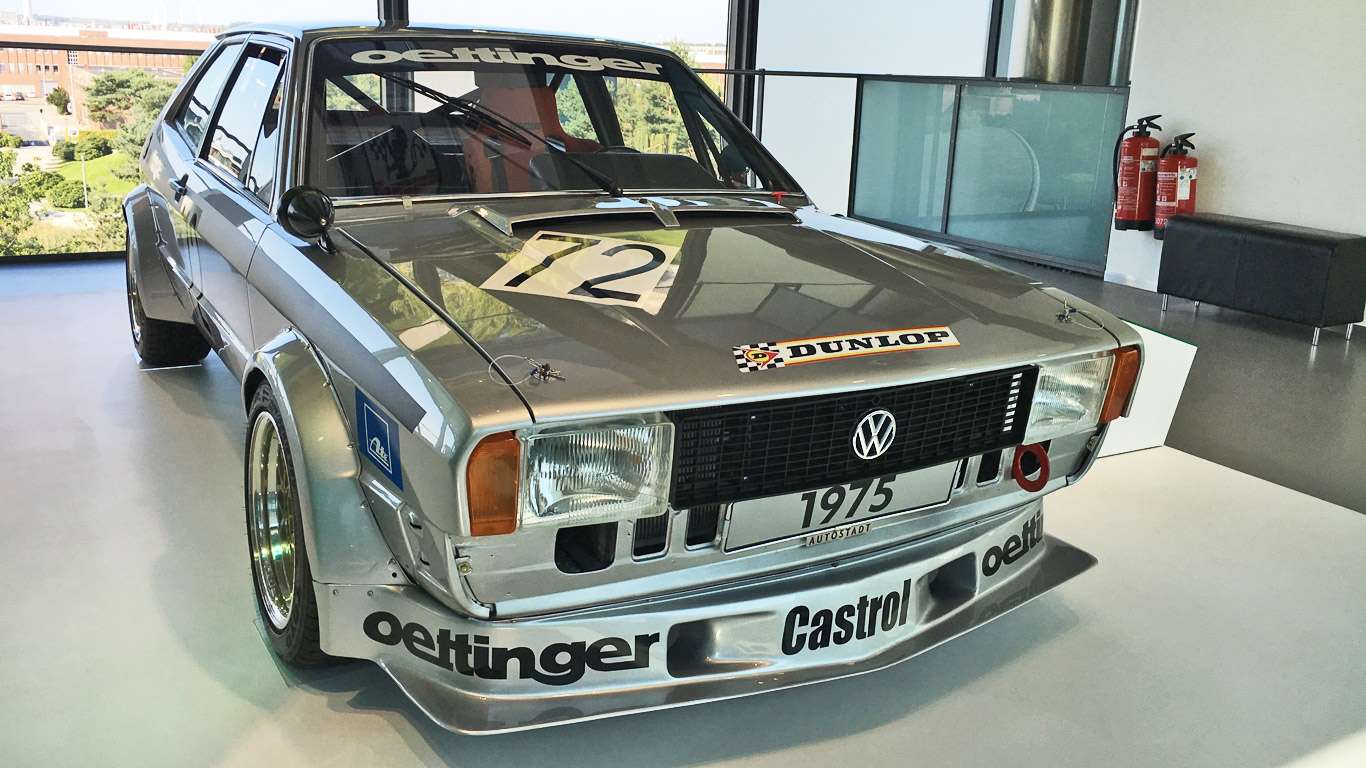
Volkswagen Motorsport
© Motoring ResearchAlthough Volkswagen and motorsport weren’t initially an obvious combination (this was the people’s car brand, after all), the Group 2 Scirocco pictured here set new standards in the German Circuit Championships. We love those riveted-on wide wheelarches.
-
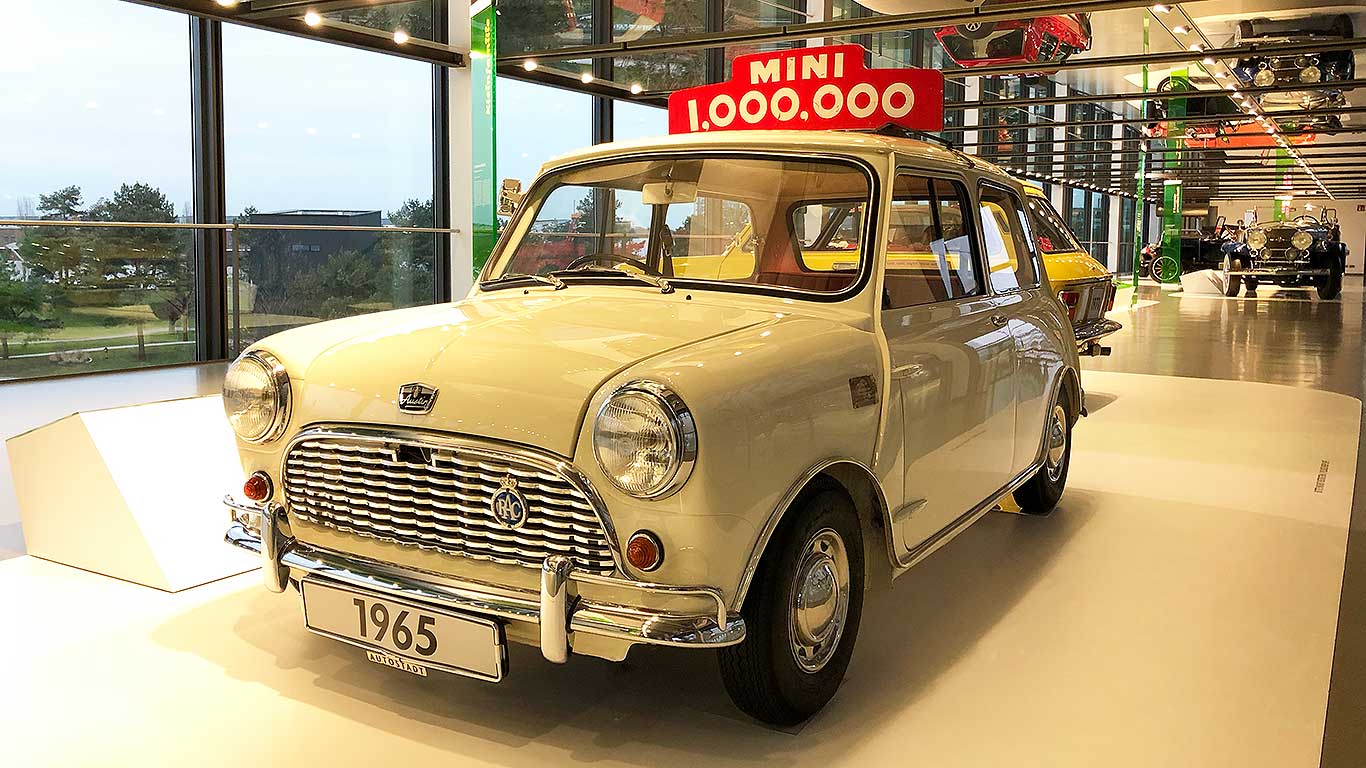
1965 Austin Mini
© Motoring ResearchAs promised, it’s not just Volkswagens displayed in the Zeithaus. The first production car with a transverse four-cylinder engine and front-wheel drive, the Mini was a packaging marvel. ‘It set the standards for compact cars,’ admits Volkswagen. This lovely example was the one-millionth Mini built by BMC.
-
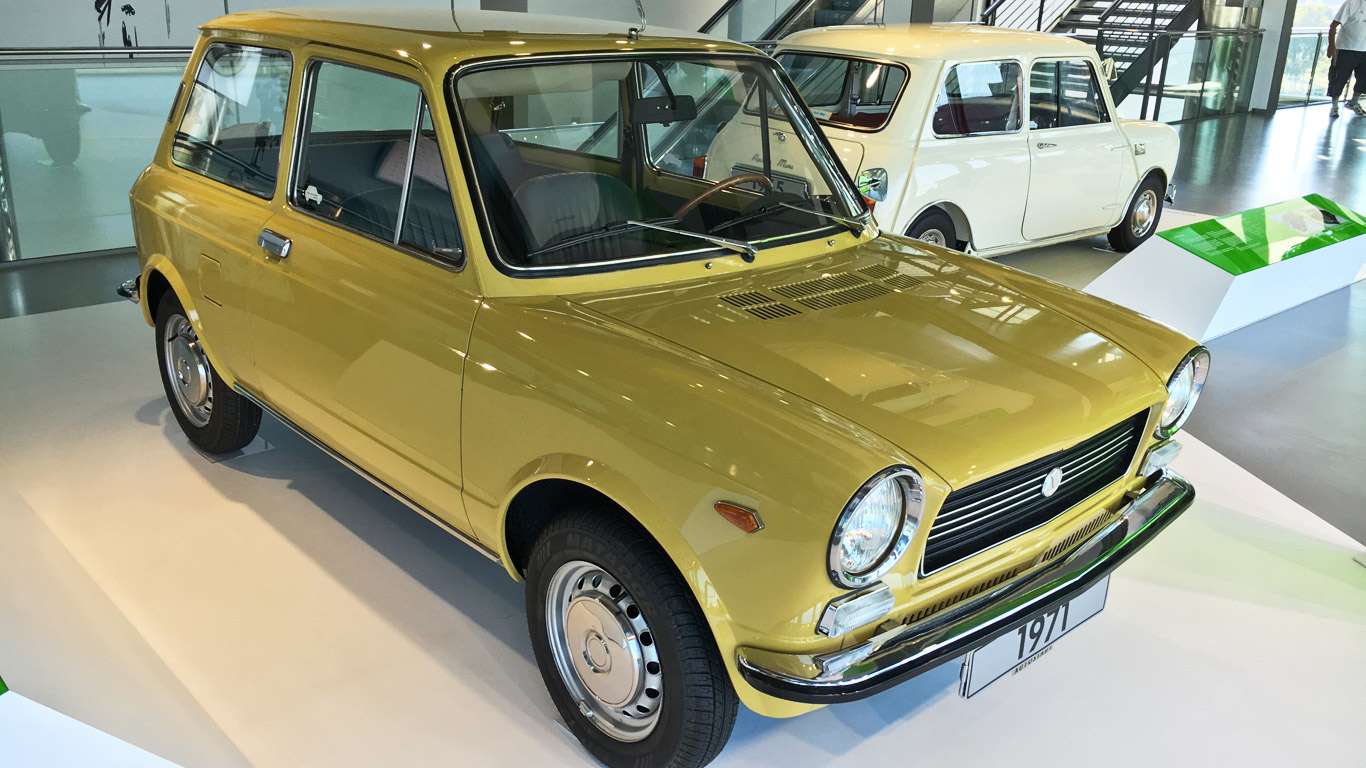
1971 Autobianchi A112
© Motoring ResearchThe Autobianchi A112 followed the example set by the Mini. With its variable rear seat and large hatchback offering easy access to the boot, it was more practical than its British rival, while a 44hp engine made it faster, too. Although popular in its native Italy, the A112 never achieved the cult status of the Mini.
-
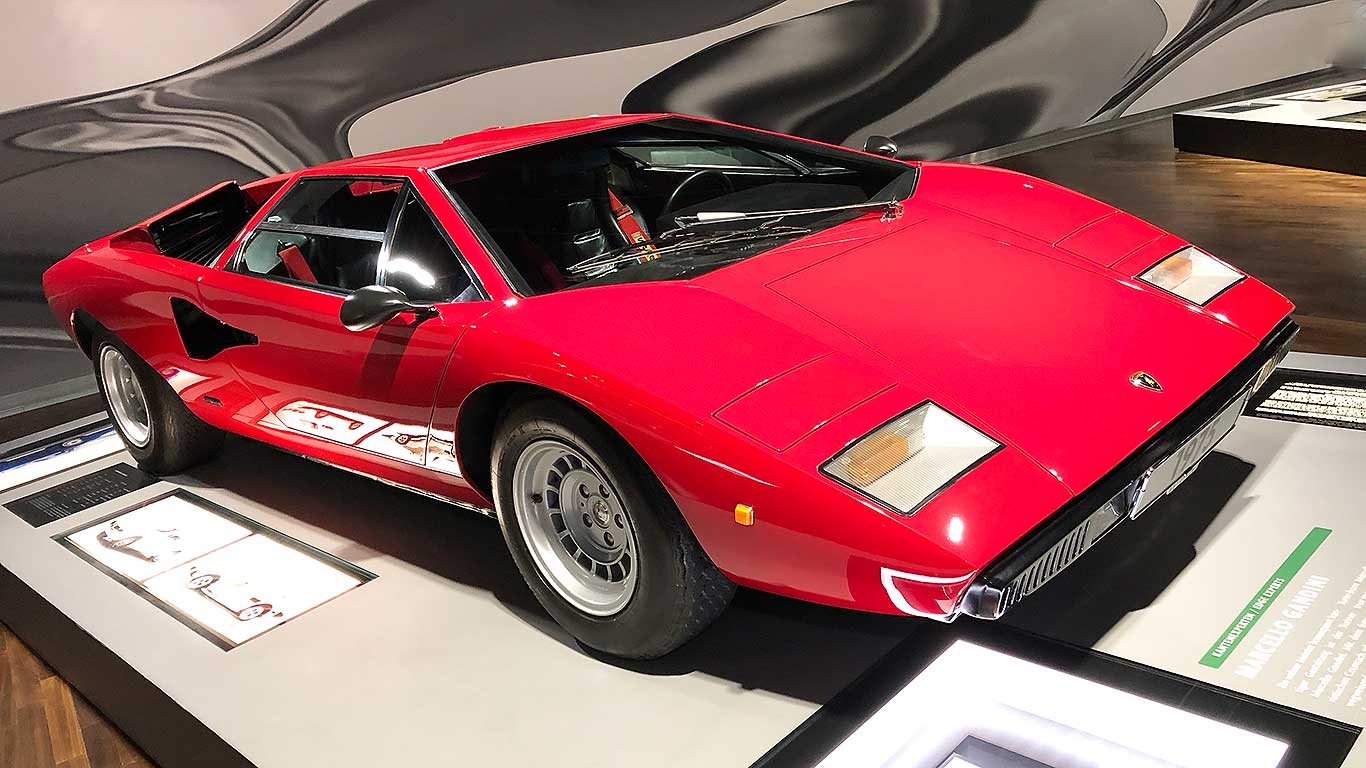
1975 Lamborghini Countach
© Motoring ResearchNow for a very different Italian car. The Lamborghini Countach debuted in 1974 and still looks like science fiction. This early LP400 model showcases the purity of Marcello Gandini’s original design, before it sprouted wheelarch extensions and a rear spoiler. Power comes from a 375hp 3.9-litre V12.
-
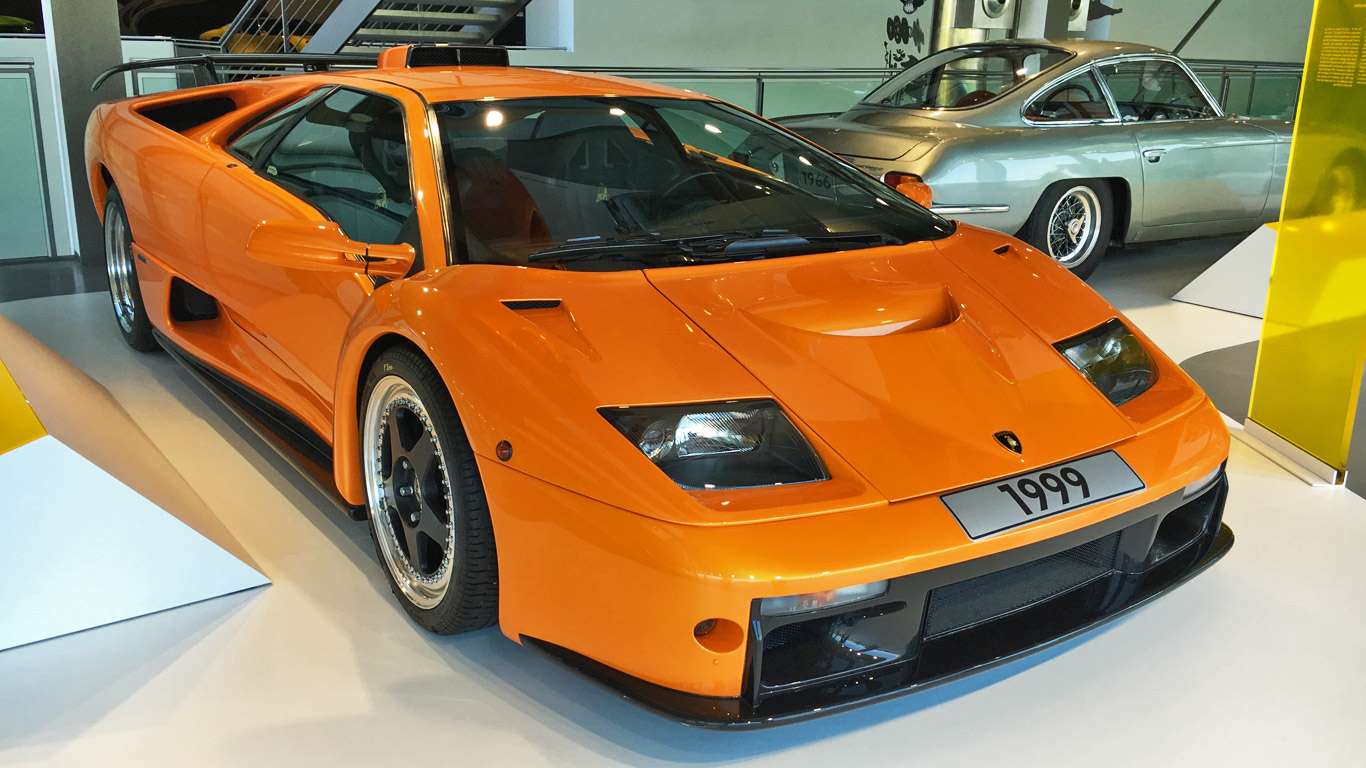
1999 Lamborghini Diablo GT
© Motoring ResearchSuccessor to the Countach, the Diablo was the first Lamborghini capable of more than 200mph, and the first to be tweaked by Audi. The German brand – part of the Volkswagen Group – swallowed up Lamborghini in 1998 and set about updating the Diablo before it was replaced by the Murcielago in 2001.
-
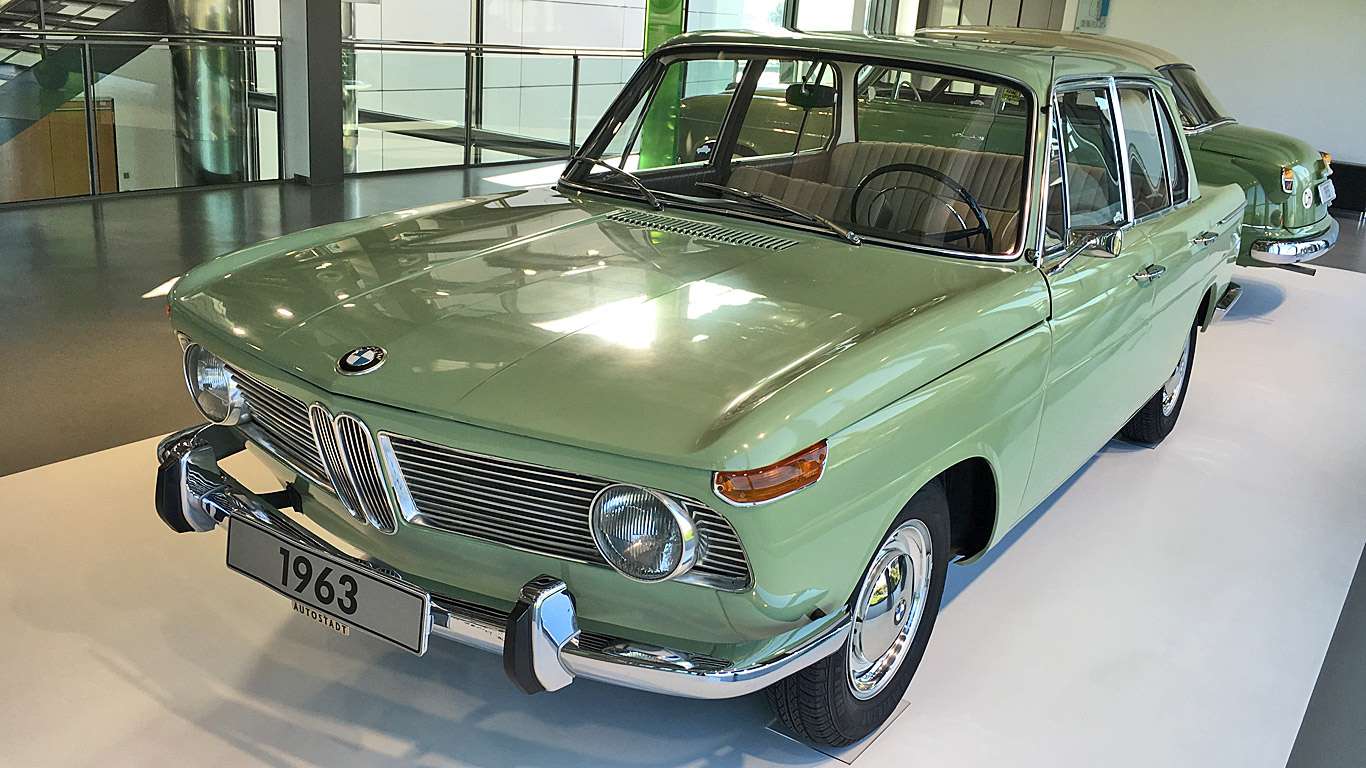
1963 BMW New Class
© Motoring ResearchAfter BMW’s financial crisis in the 1950s, its ‘New Class’ range of cars in the 1960s saved the brand from going bust. In 1962, the company broke even for the first time in decades, while in 1963 – the year this stunning 1500 saloon was built – sales rocketed by 47 percent.
-
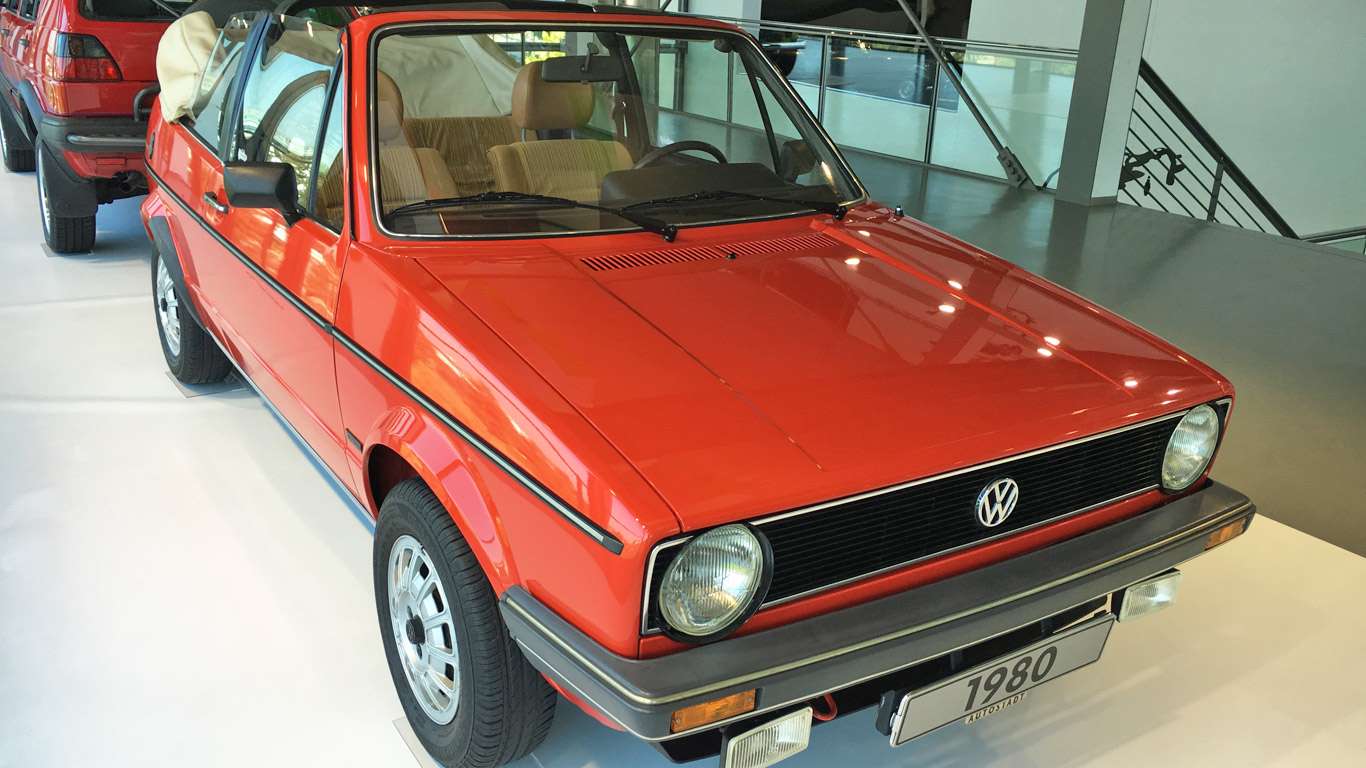
1980 Volkswagen Golf Cabriolet
© Motoring ResearchHow have we got this far without talking about a Golf? The Golf Cabriolet of 1979 was the successor to the drop-top Beetle. It was the world’s most popular convertible at the time, with nearly 400,000 produced between 1980 and 1993.
-
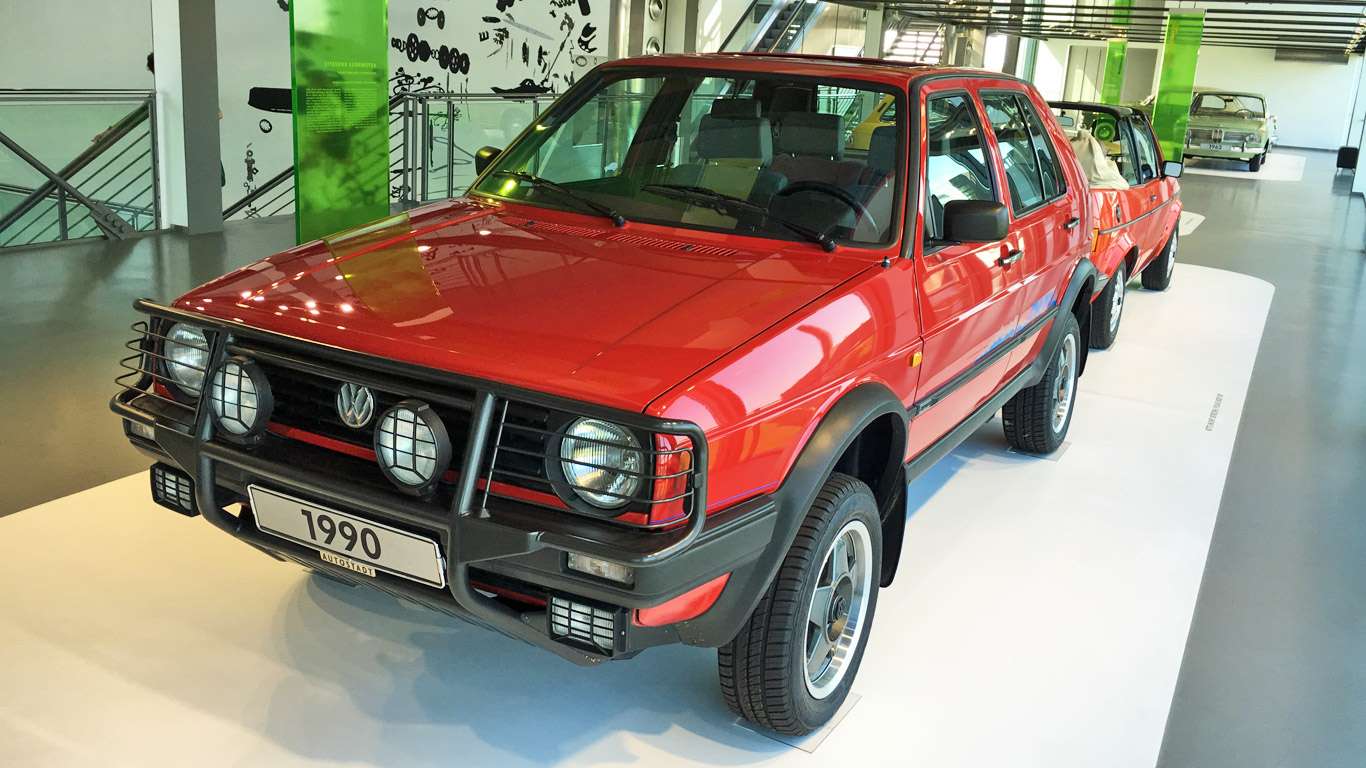
1990 Volkswagen Golf Country
© Motoring ResearchThe Nissan Qashqai might define the sector today, but high-riding crossovers aren’t a new thing. Based on the 4×4 Golf Syncro, the Volkswagen Golf Country of 1990 added 60mm of ground clearance, a skid plate and a fold-out spare wheel. It was in production for just two years, with 7,735 examples sold.
-

1950 Volkswagen Type 2 Transporter
© Motoring ResearchThe Volkswagen Type 2 Transporter followed in 1949, providing mobility for the nation’s craftsmen and retailers. Years later, the split-screen van is now a much-loved automotive icon, with a worldwide following of enthusiasts.
-
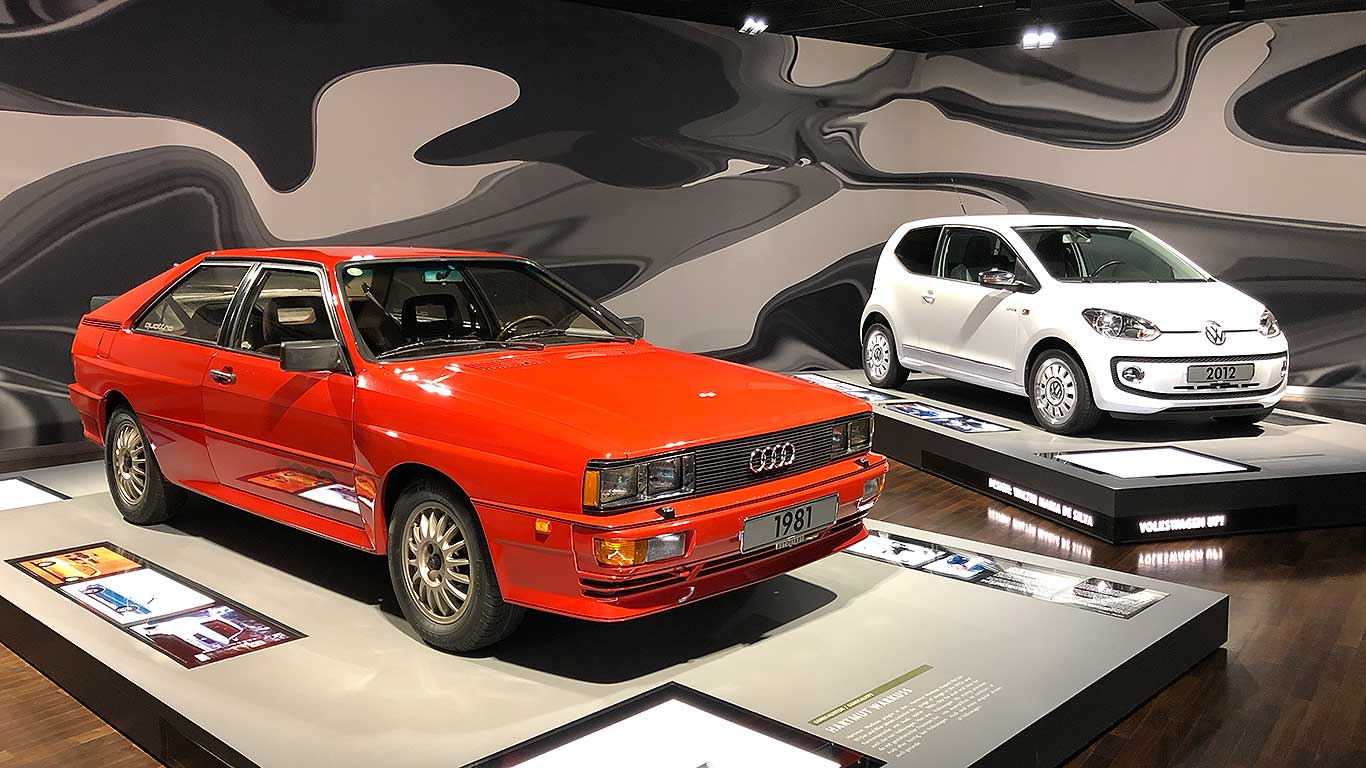
1980 Audi Quattro
© Motoring ResearchFire up the Quattro! Audi’s boxy coupe used four-wheel drive to win the World Rally Championship, and transform the image of the brand. The Quattro debuted in 1980, with a turbocharged five-cylinder engine and top speed of 137mph. It stayed in production until 1991, but its legacy continues to loom large.
-
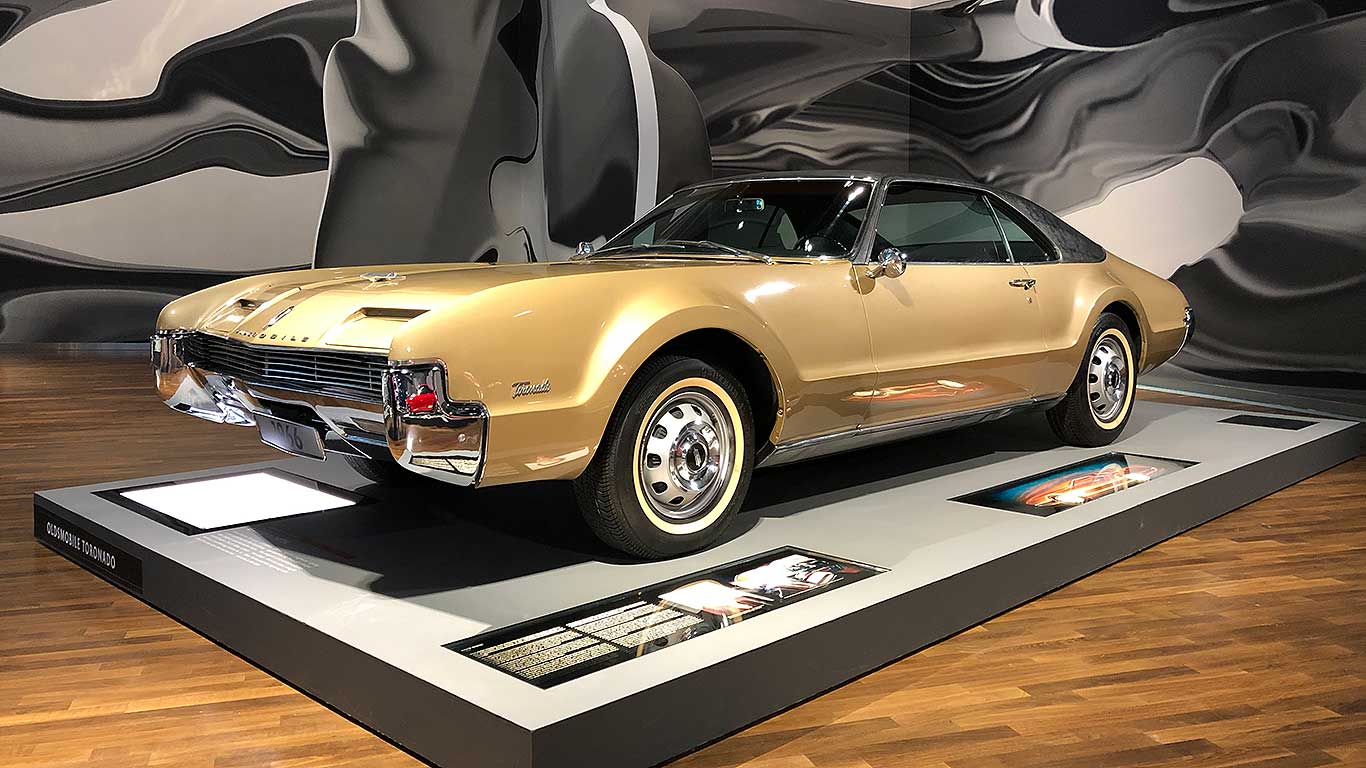
1966 Oldsmobile Toronado
© Motoring ResearchCrossing the Atlantic, the Toronado looks like a typical – albeit particularly elegant – Yank Tank. However, it was unusual for being front-wheel drive, its 7.0-litre Super Rocket V8 serving up 385hp via a Turbo-Hydramatic three-speed automatic gearbox. American cars have the best names, don’t they?
-
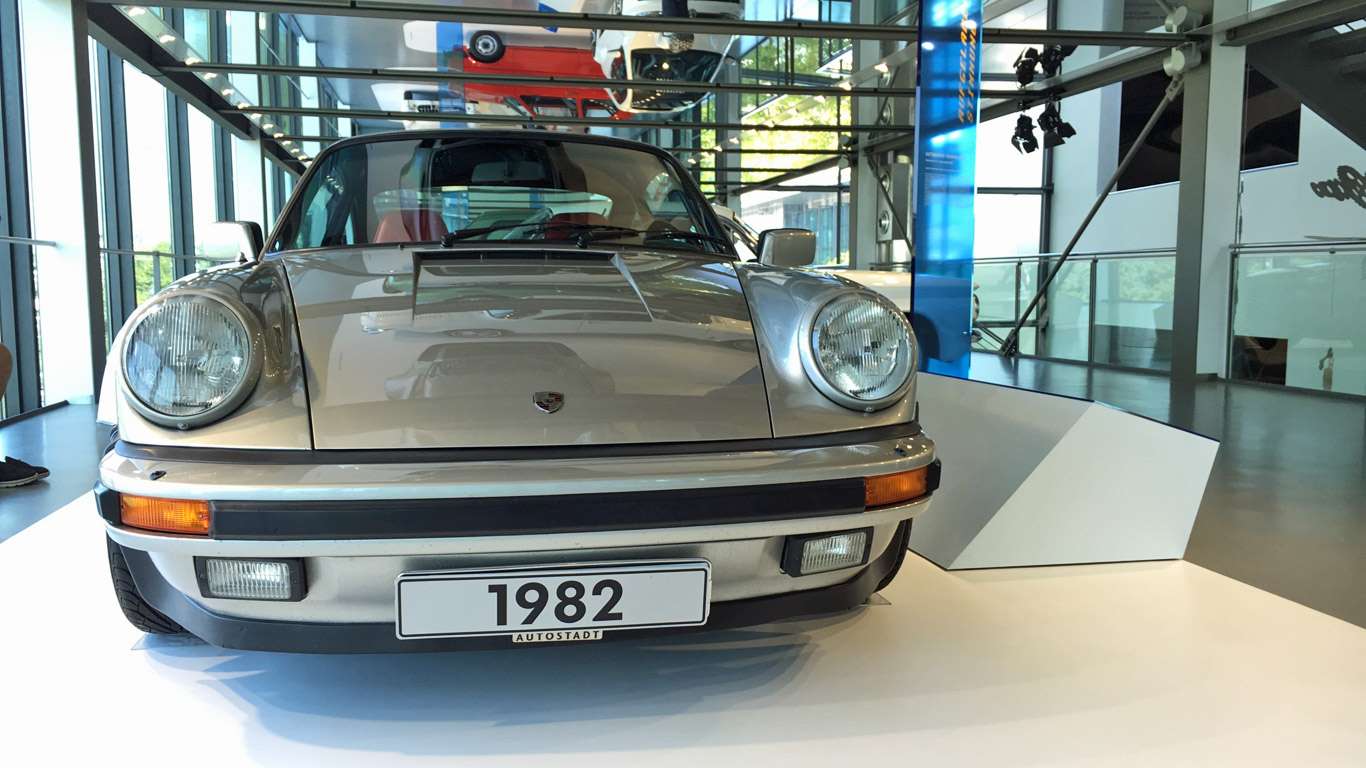
1982 Porsche 911 Turbo
© Motoring ResearchThe Porsche 911 ‘930’ Turbo arrived in 1975, immediately becoming the fastest production car sold in Germany. With 260hp, it could hit 62mph in 5.2 seconds and a top speed of 155mph. Power was later increased to 300hp and finally 330hp, taking the top speed to 173mph. Visual cues included the legendary ‘whale tail’ rear spoiler and flared wheelarches.
-
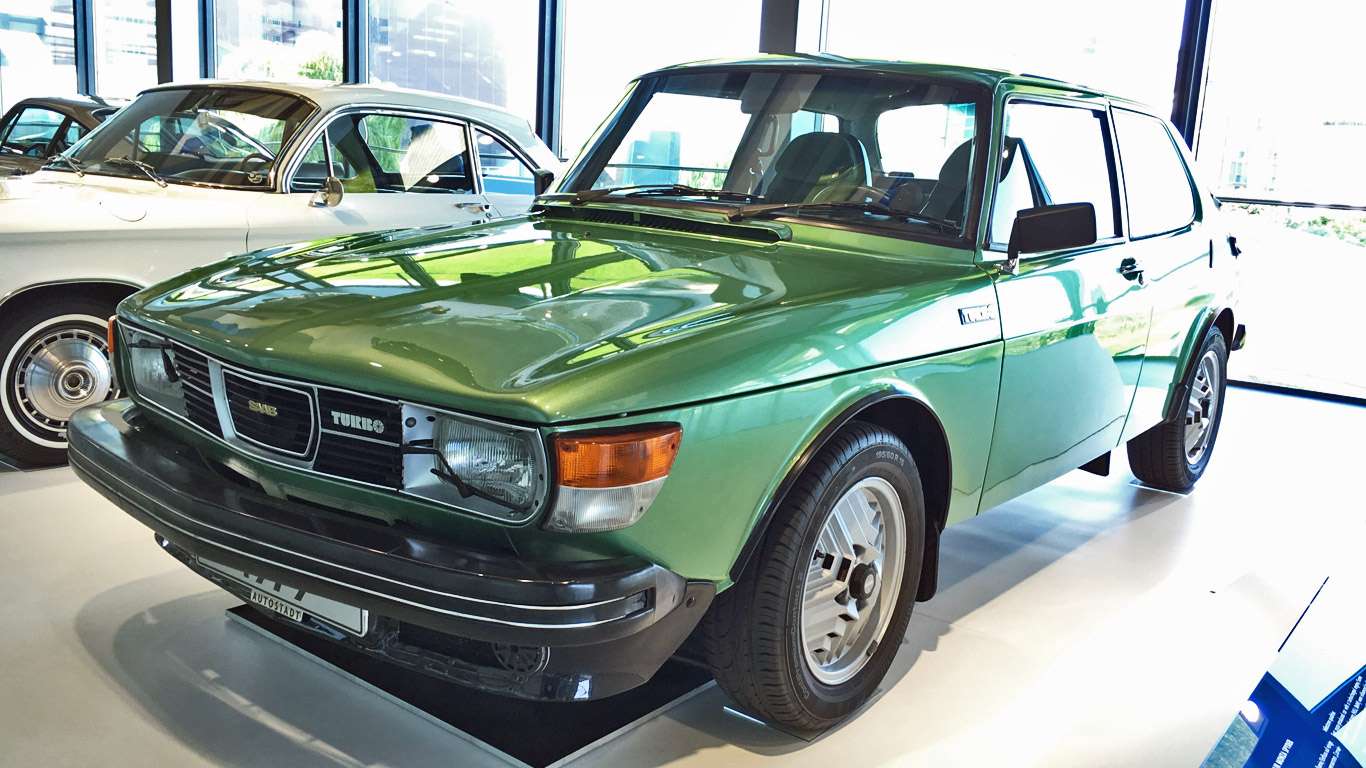
1977 Saab 99 Turbo
© Motoring ResearchTurbochargers aren’t just about ultimate performance, though. The Saab 99 of 1977 was revealed at the Frankfurt Motor Show, and featured a Garrett turbo to boost torque at low revs. More than 40 years later, turbochargers are being used for a similar purpose today.
-
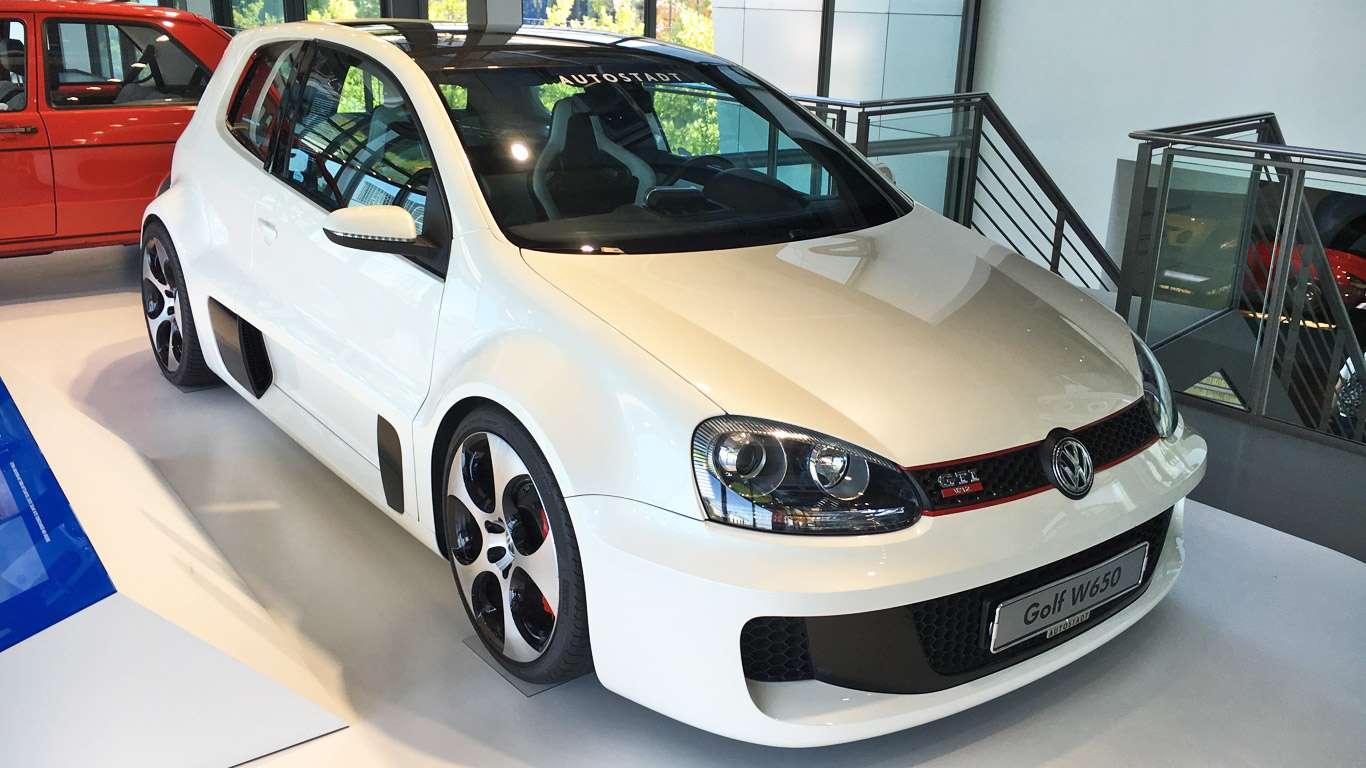
2007 Volkswagen Golf GTI W12-650
© Motoring ResearchThis bonkers one-off concept car from 2007 is a Golf powered by a 650hp W12 Bentley engine. Unveiled at the annual Worthersee GTI festival, the W12-650 has a carbon fibre composite roof, while its rear axle and brakes come from a Lamborghini Gallardo. It can hit 62mph in 3.7 seconds.
-
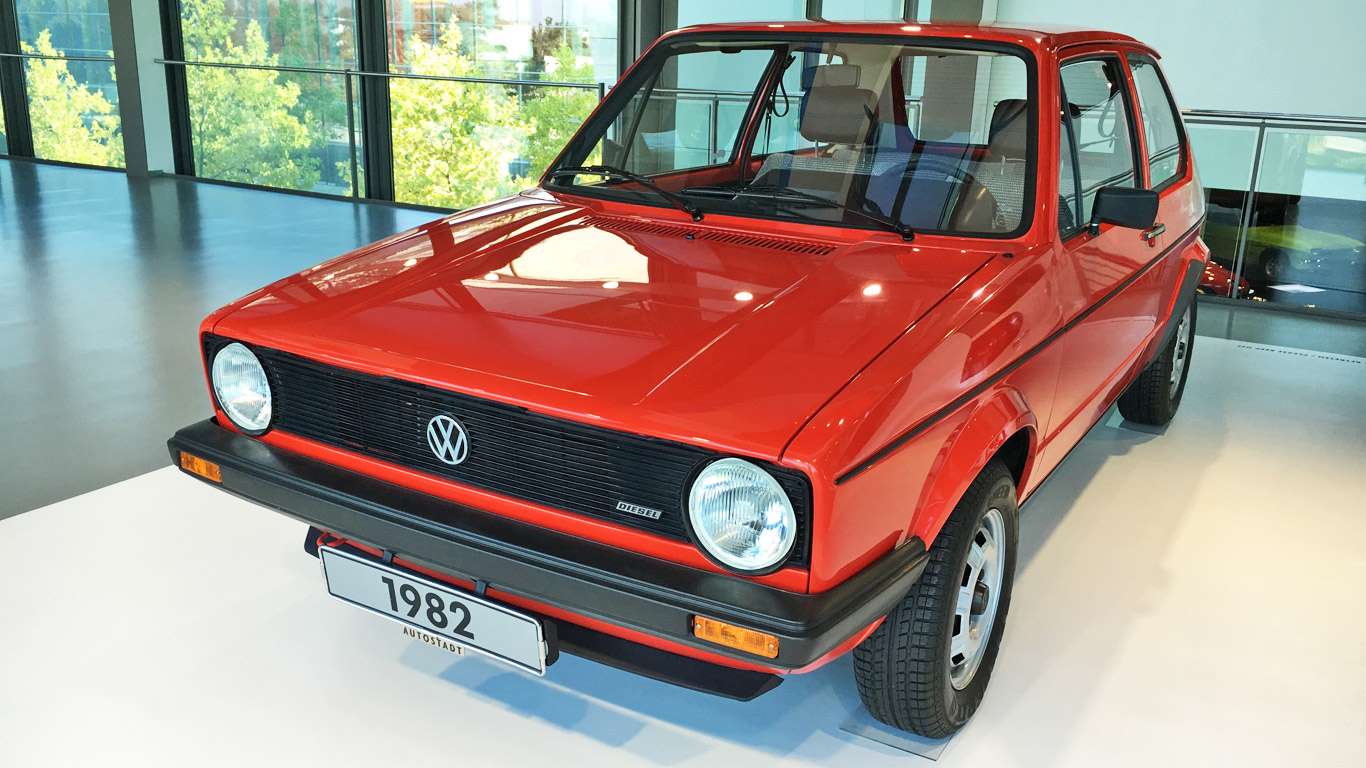
1982 Volkswagen Golf diesel
© Motoring ResearchBack down to earth with a bump, the original Golf diesel was launched late in 1976 and was the first diesel hatchback of its kind. It used a 1.5-litre engine producing 54hp, and shared many parts with the petrol model.
-
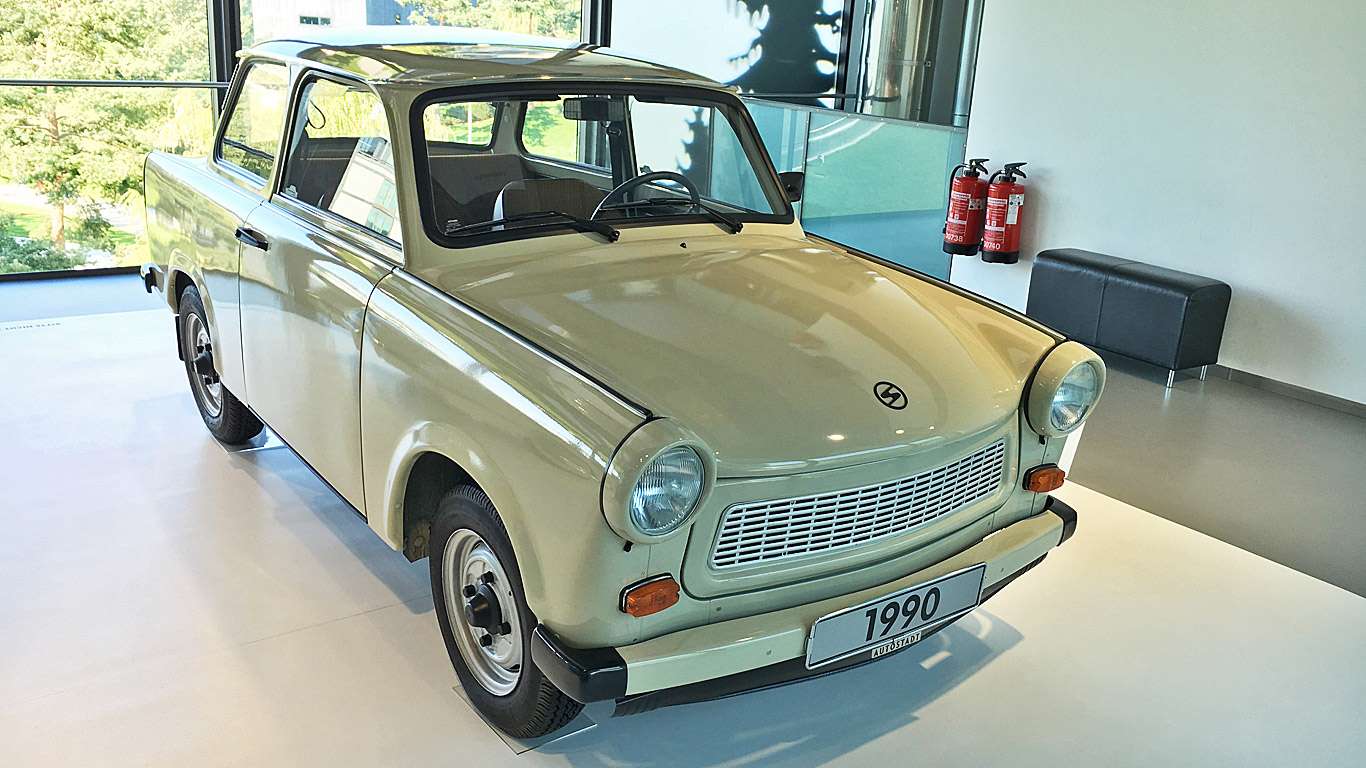
1990 Trabant 601
© Motoring ResearchA response to West Germany’s ‘people’s car’, the Beetle, more than 2.8 million Trabant 601s were sold in the former East Germany during its 37-year production run. Initially by a 23hp two-stroke engine, the 601 had a cheap but lightweight plastic body.
-
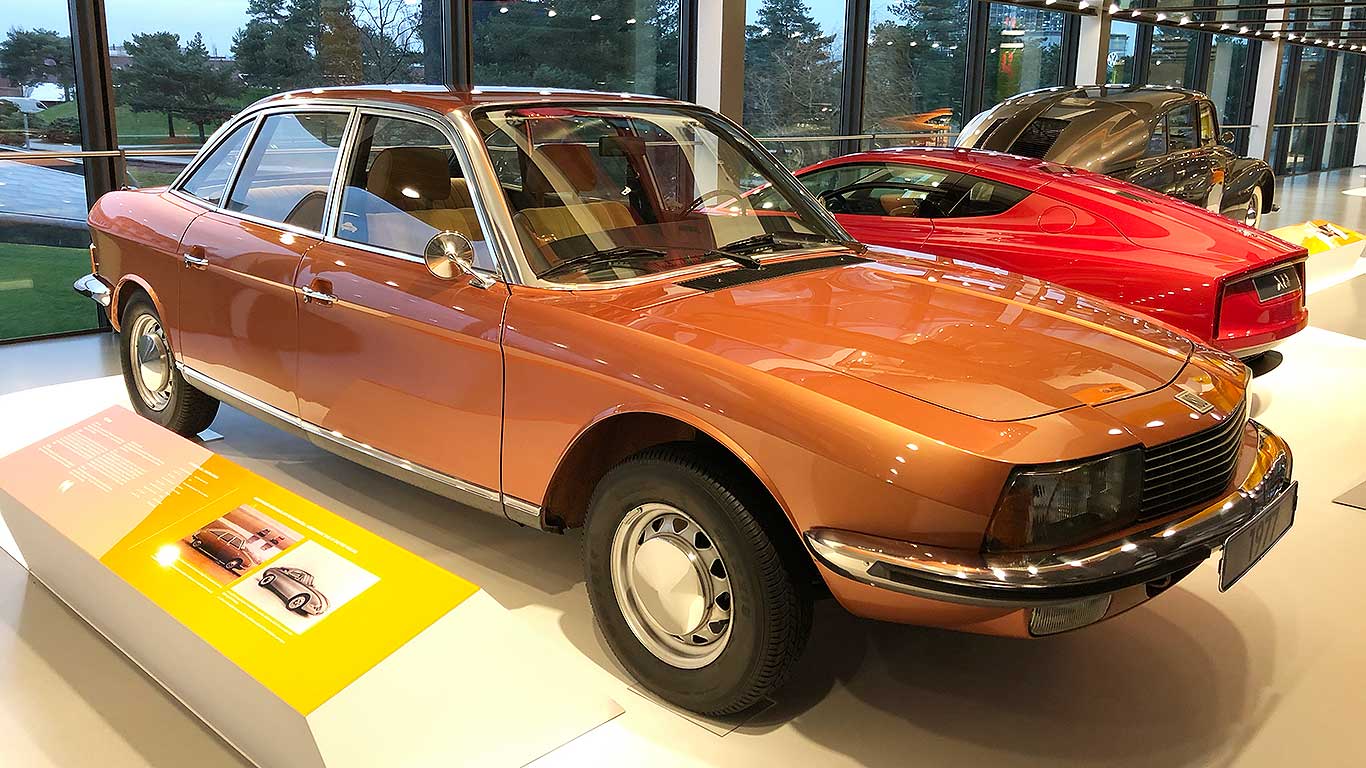
1977 NSU Ro80
© Motoring ResearchThe innovative NSU Ro80 used a rotary engine driving the front wheels via a semi-automatic gearbox with no clutch pedal. Despite its elegant design and a Car of the Year title in 1968, the Ro80 was plagued by reliability problems. Many were subsequently adapted to use conventional engines, notably the Ford Essex V4. A sad case of what could have been.
-
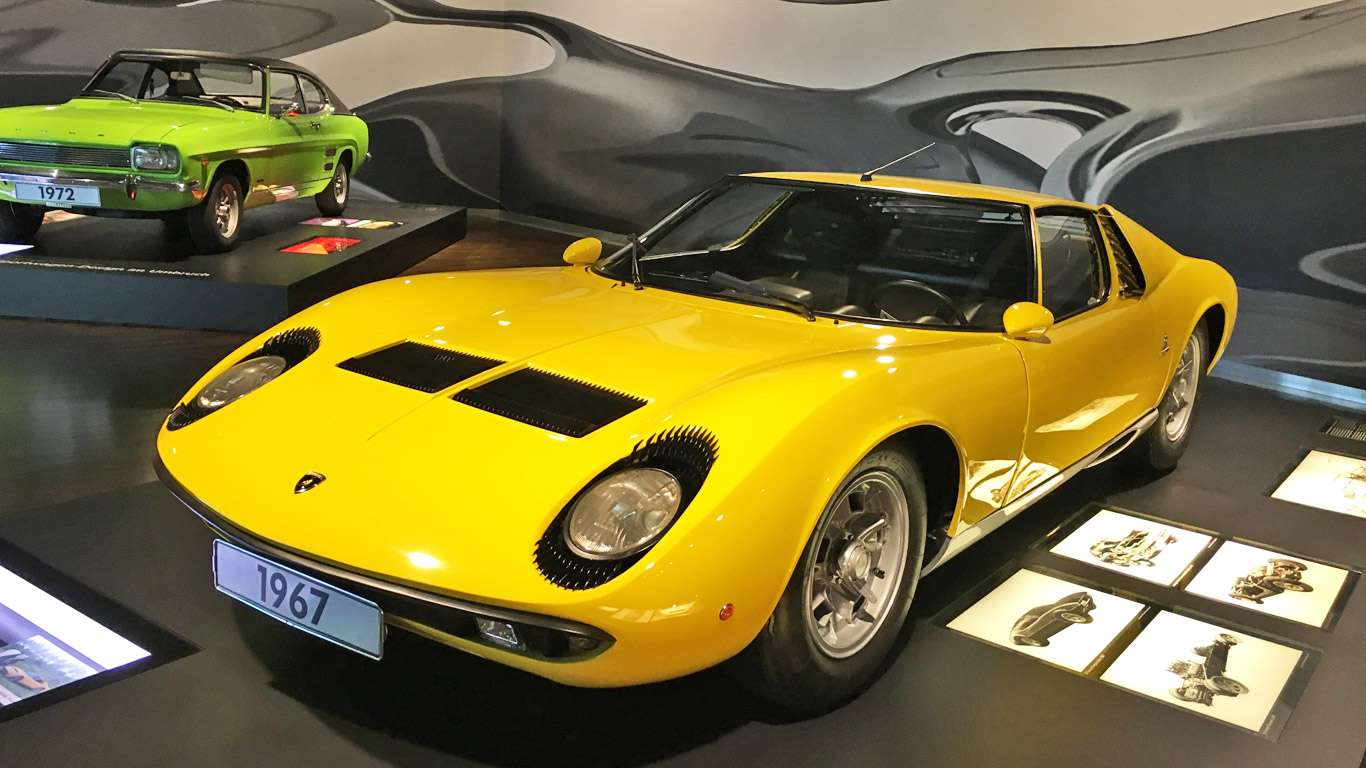
1967 Lamborghini Miura
© Motoring ResearchThe most beautiful road car ever? The Lamborghini Miura, launched in prototype form at the 1966 Geneva Motor Show, is certainly in with a shout. One of the first mid-engined sports cars, the Miura was also the fastest car on sale when new – good for 171mph. Bellissima!
-
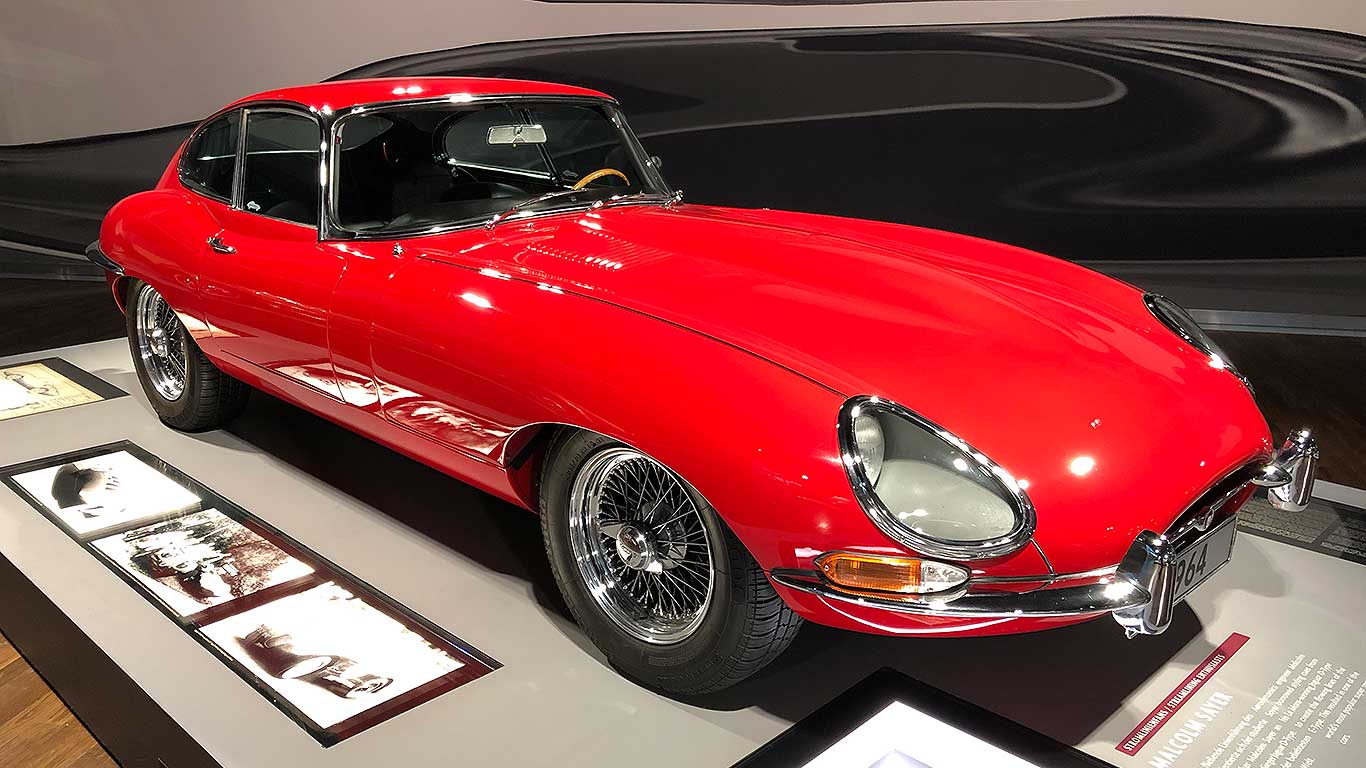
Jaguar E-Type
© Motoring ResearchIn the battle of the most beautiful, the Jaguar E-Type is perhaps the Miura’s closest rival. It too made headlines with its top speed, although it later transpired the advertised 150mph maximum was achieved using Dunlop Racing Tyres – and possibly a higher rev limit. Whatever the truth, the six-cylinder E-Type was hugely cheaper to buy than any Italian exotic.
-
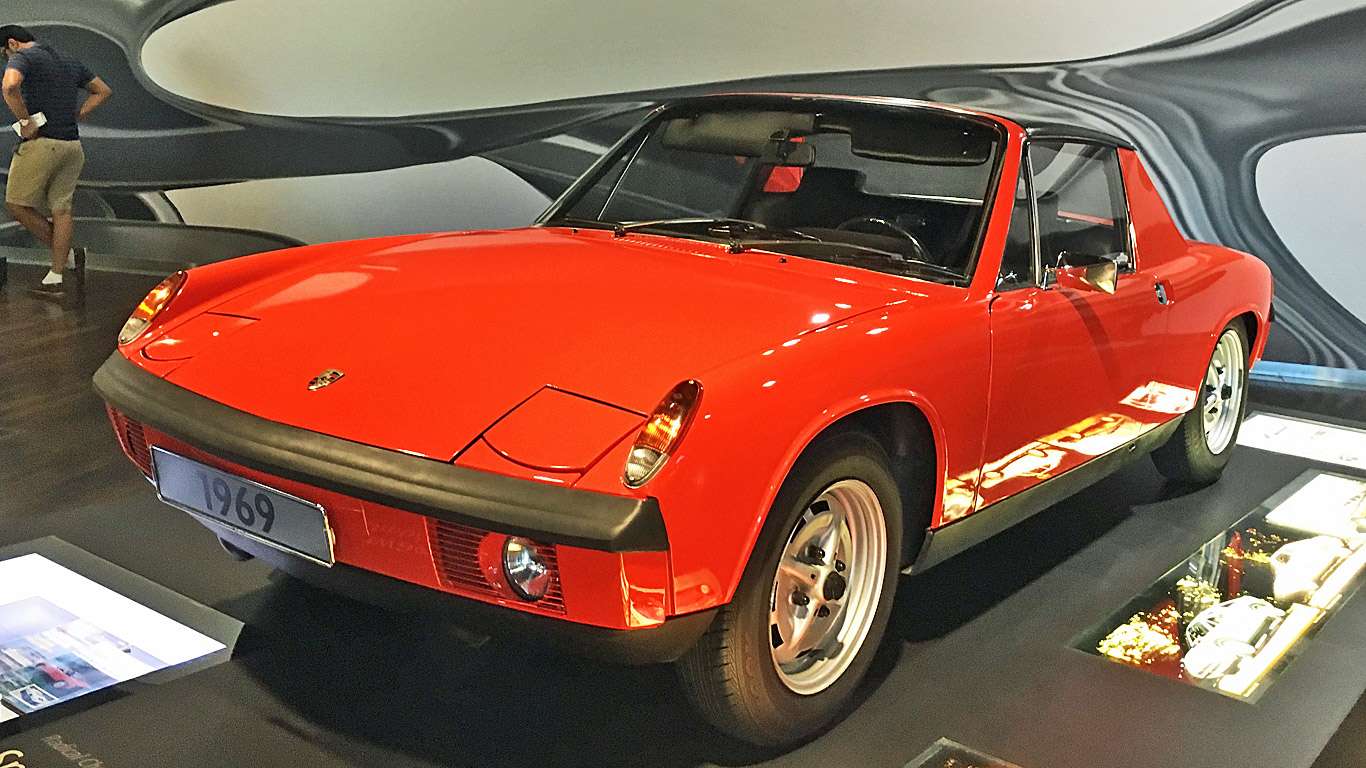
1969 Porsche 914
© Motoring ResearchSomewhat unappreciated today, the Porsche 914 was a joint effort between Volkswagen and Porsche. It was intended to be sold as a VW with a four-cylinder engine, alongside the flat-six Porsche, but the suits in Zuffenhausen decided this would be too damaging for their brand. With VW refusing to share tooling expenses, it was nearly as expensive as a 911 – and consequently sold in small numbers.
-
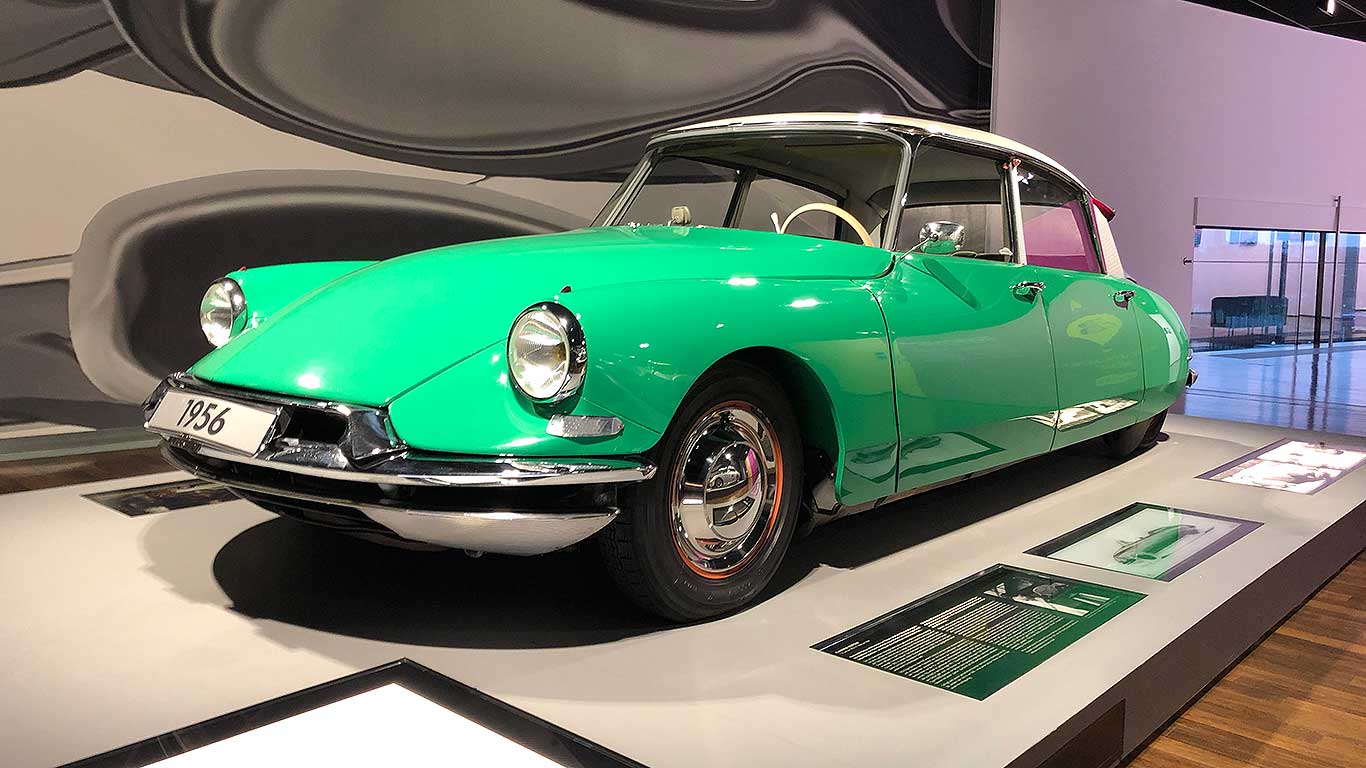
1956 Citroen DS
© Motoring ResearchCan you imagine how futuristic this Citroen DS looked when revealed in 1956? The first production car to use disc brakes, the DS also featured complicated ‘hydropneumatic’ self-levelling suspension. It stayed in production for 20 years.
-
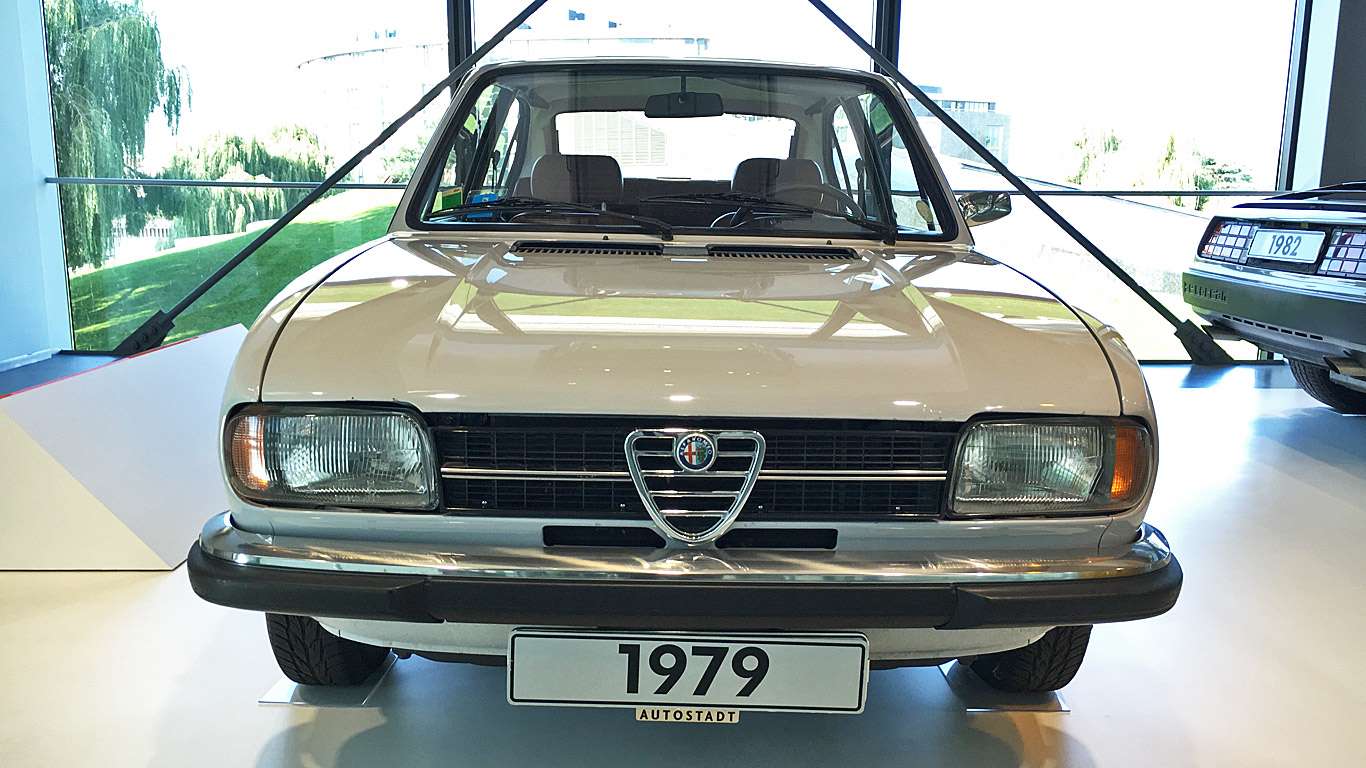
1979 Alfasud
© Motoring ResearchThis little hot hatchback is an Alfasud: one of Alfa Romeo’s most popular models. Created by Italdesign (a studio now owned by the Volkswagen Group), the Sud apparently influenced the 1995 Renault Megane and 1999 Seat Leon. So now you know.
-
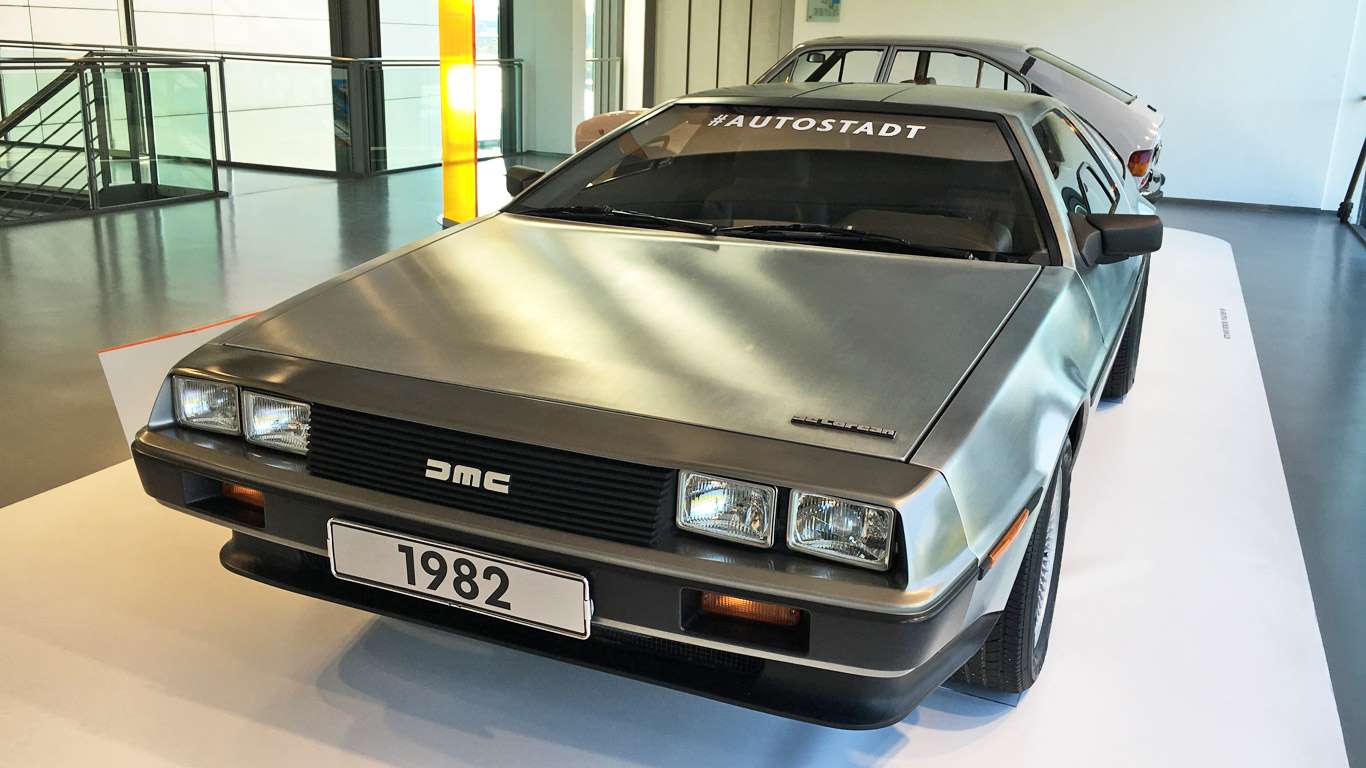
1982 DeLorean DMC-12
© Motoring ResearchThis stainless steel sports car is, of course, best known for its appearance in the Back to the Future films. The DeLorean used gullwing doors and a fibreglass chassis. Sadly, a wheezy, rear-mounted 130hp Renault V6 made it much slower than it looks. You’d be lucky to reach 88mph.
-
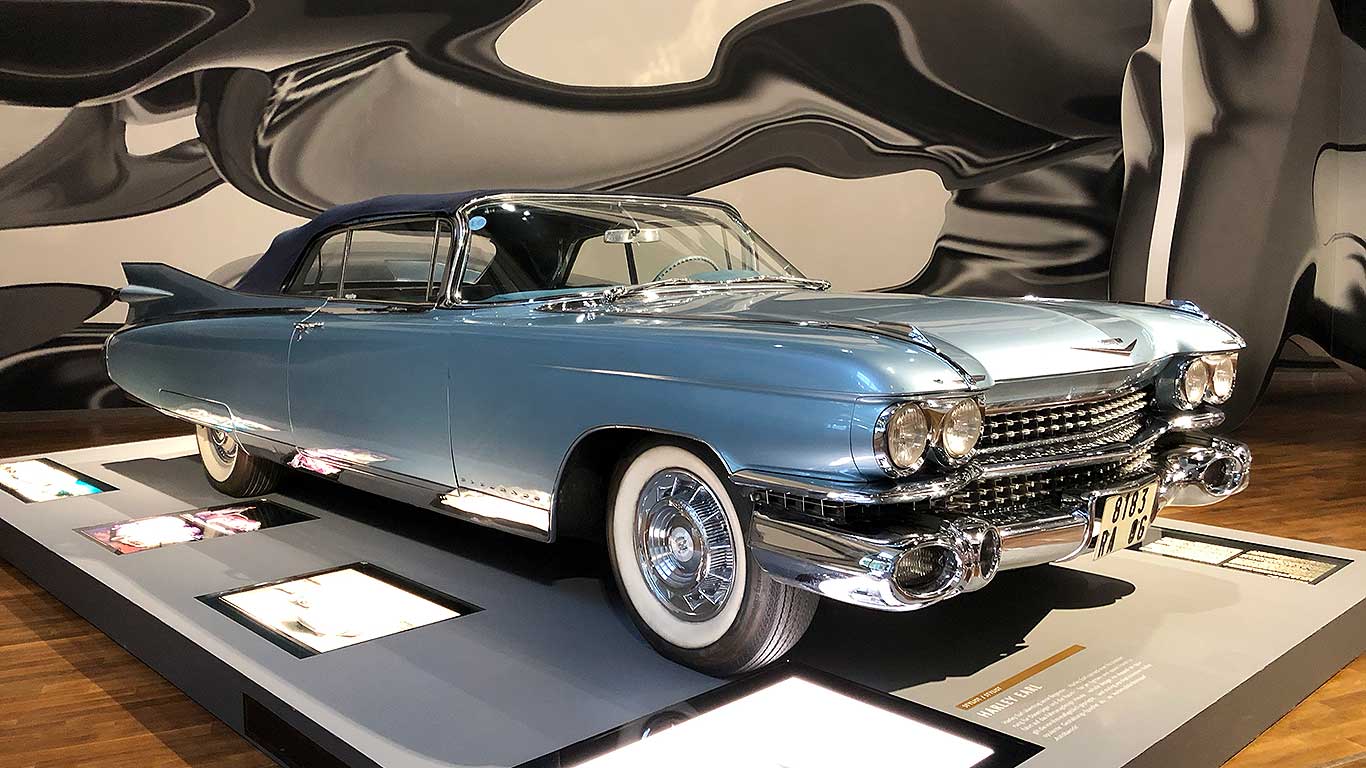
1959 Cadillac Eldorado Biarritz Convertible
© Motoring ResearchBack in the 1950s, Cadillac changed the appearance of its flagship Eldorado for every model-year. This 1959 version is the most iconic, with towering fins and dual bullet tail lights. Standard equipment included air suspension, electric seats, power steering and a radio. There’s no better place to listen to rock ‘n’ roll.
-
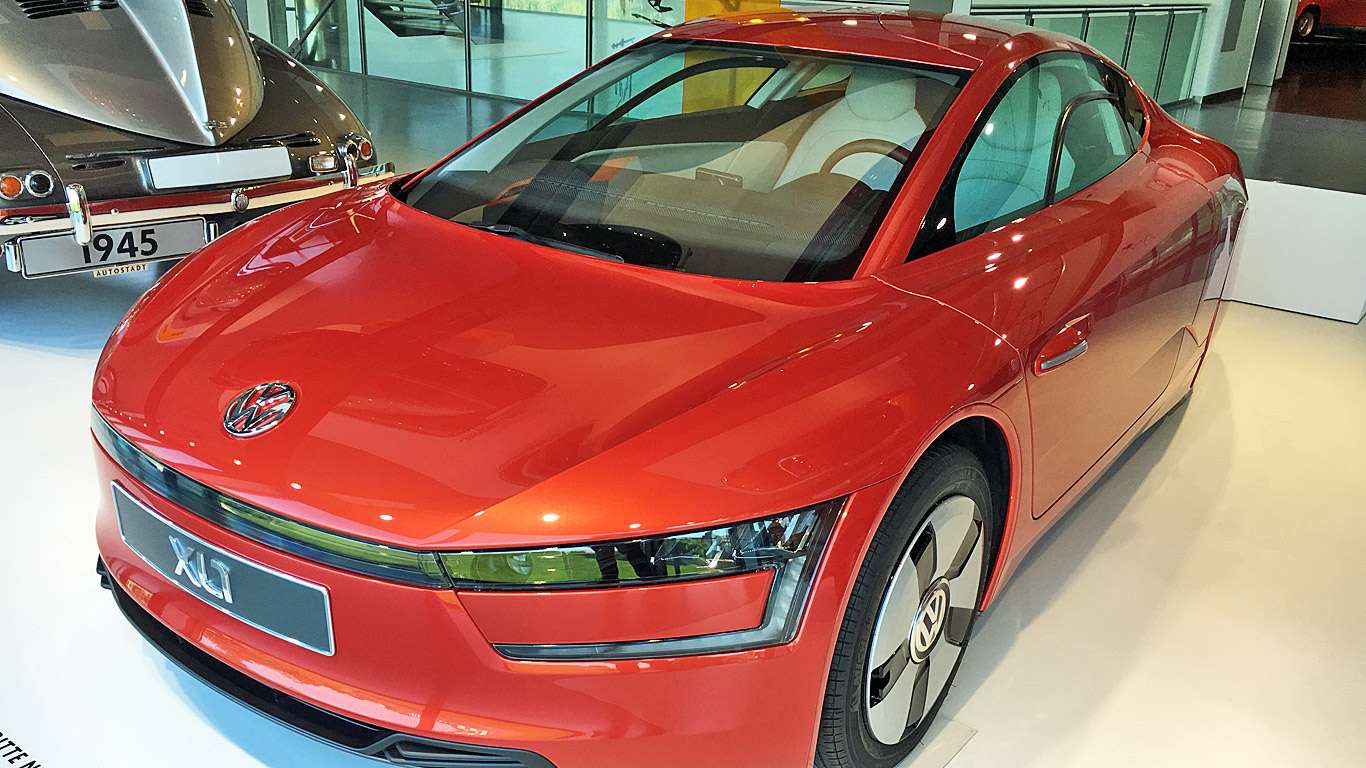
2013 Volkswagen XL1
© Motoring ResearchOne of the more recent entries to the museum, the Volkswagen XL1 is a limited-run plug-in hybrid eco car. It uses a diesel engine and was designed to travel 100km (62 miles) on one litre of fuel, equating to 280mpg. The two seats are staggered, with one partly behind the other, to help achieve a smoother and more aerodynamic body shape.
-
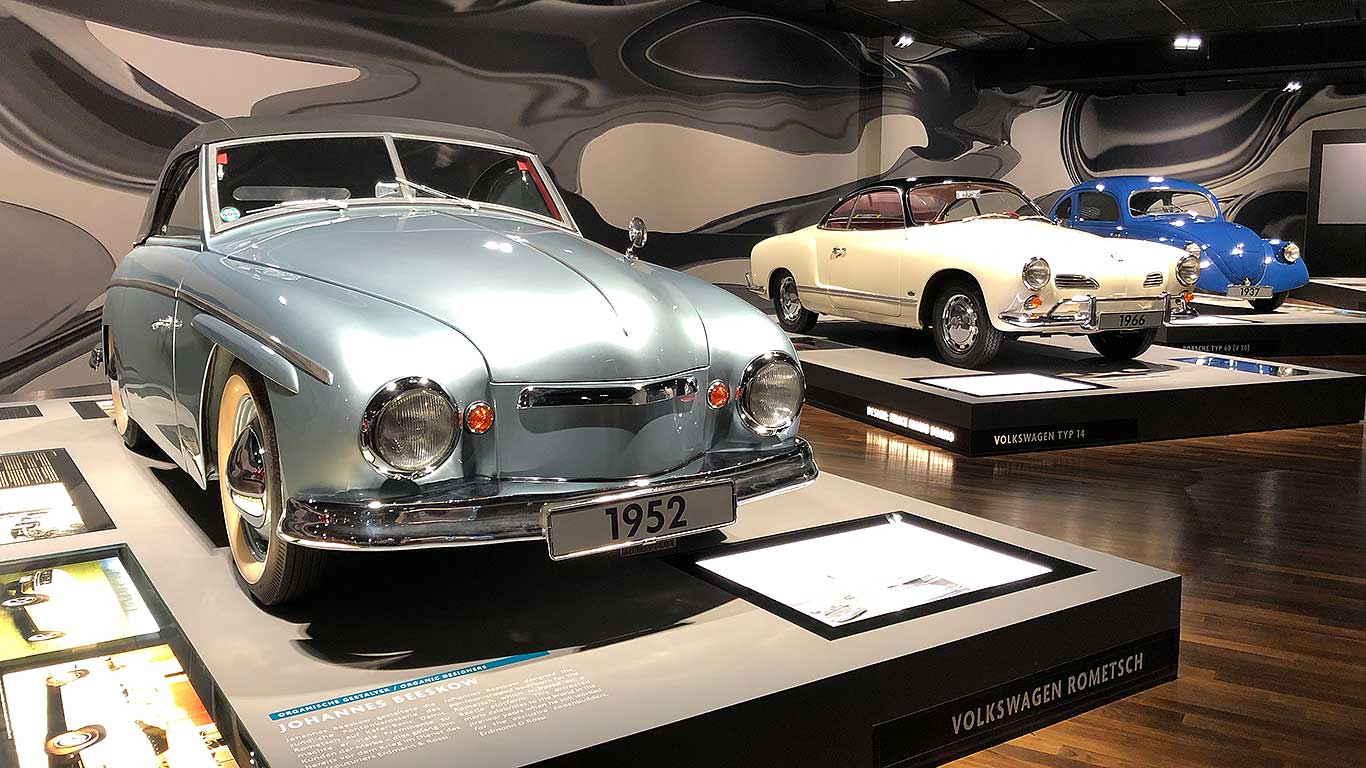
1951 Volkswagen Rometsch Beeskow
© Motoring ResearchDesigned by the German coachbuilder Karosserie Friedrich Rometsch, this three-seat roadster (the second passenger sat at 90 degrees behind the driver) was based on the Volkswagen Beetle. However, it cost around the same as the contemporary Porsche 356 and only around 175 were sold.
-
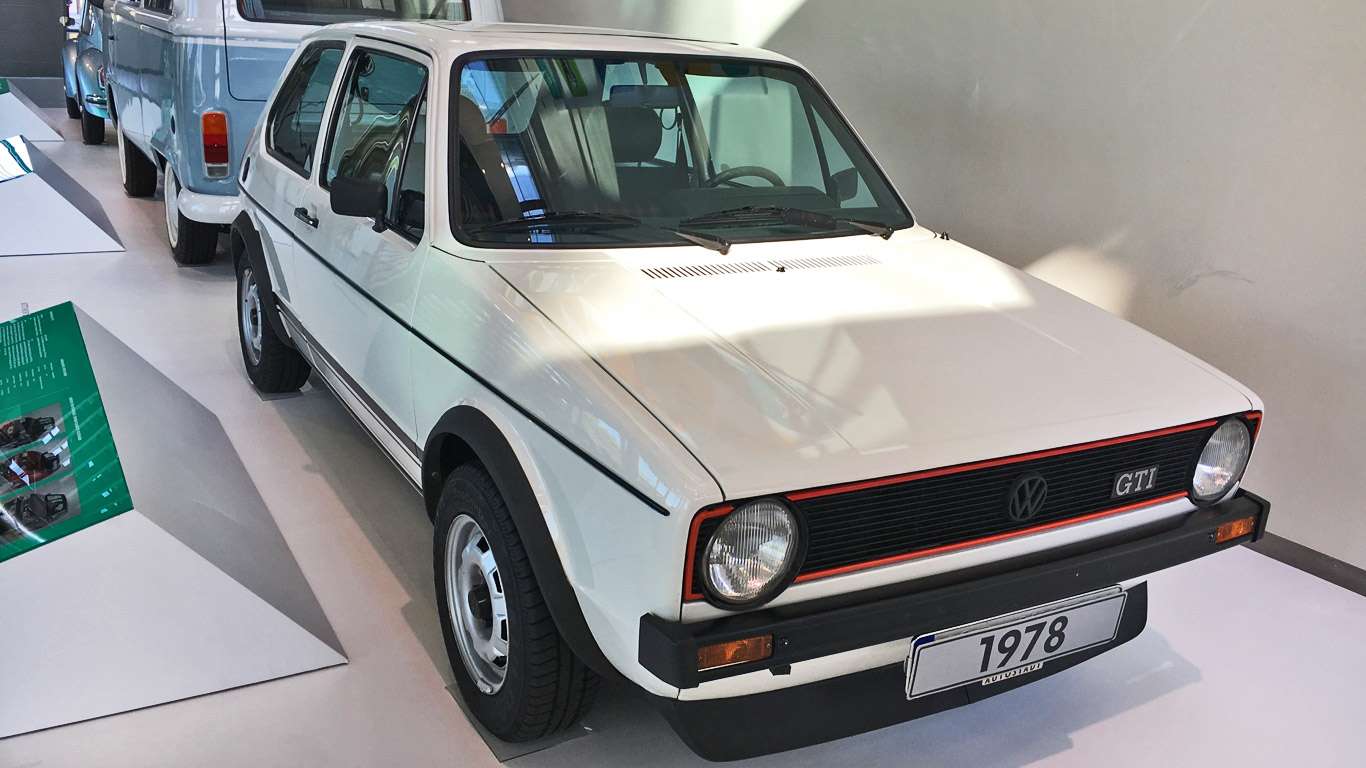
1978 Volkswagen Golf GTI
© Motoring ResearchWe’ll end with an icon: the first-generation Volkswagen Golf GTI. Revealed at the 1975 Frankfurt Motor Show, the GTI was among the first hot hatchbacks – and the most famous of all. It started life with a 110hp 1.6-litre engine and four-speed manual gearbox.